PRO ARB
PROFESSIONAL TREE CARE FOR TREE SURGEONS














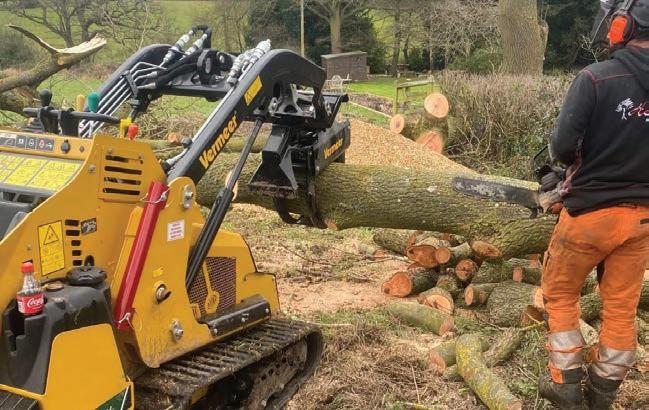



We have a great range of Vermeer Tree Care Equipment to suit UK Arborists. The new BC200 8" chipper packs a punch with it’s 57hp Kubota petrol engine. The ever popular Vermeer S925TX Skid Steer is now available with either the Kubota 25hp diesel or 40hp petrol engine. The Stump Grinder range includes the tracked SC30TX with great maneuverability and power on the stump. Contact us today for an equipment demonstration. 01933 274400








There’s no getting away from the fact working with trees can be a risky business. This Pro Arb is a ‘safety special’ and is packed with ways to reduce some of the day-to-day hazards that are part of the job. Accidents can occur for many reasons, including a failure to communicate. This can be particularly challenging if there is a worker high up in a tree, while others are on the ground, with risks even greater in a noisy environment. Renowned competitive climber, arborist and climber Josephine Hedger has advice on boosting safety from a job’s start to finish on page 22.
There are also risks connected to pests and diseases and in particular, the threat of non-native organisms. The crucial role of biosecurity is covered by Bartlett’s Luke Hailey on page 16.
Equipment safety is under the spotlight on page 31, which features the latest products and guidance from providers and our Meet the Supplier feature on page 38 features PPE specialist Outwear.
Our interviews include – on page 14 – Amie Taylor, director of Tree Doctors whose daughter Ruby is also one of the firm’s arborists, and we feature George Trott, who is setting up his own arboricultural consultancy, on page 48.
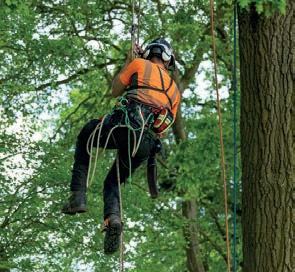
Finally, don’t miss our piece on page 28 where three arborists talk about their reasons for investing in substantial kit – climbing remains core, but increased mechanisation is coming.
As ever, Pro Arb welcomes your views on what you think about the issue and what you’d like us to cover –proarbeditor@eljays44.com

ADVERTISING
Sales manager – Luke Chaplin
luke.chaplin@eljays44.com
Tel: 01903 777 582
Eljays44 Ltd BizSpace, Courtwick Lane, Littlehampton, West Sussex, BN17 7TL
EDITORIAL
Features editor –
Rachel Gordon proarbeditor@eljays44.com
Head of content –
Nina Mason
nina.mason@eljays44.com
Senior subeditor –
Katrina Roy katrina.roy@eljays44.com
Sales executive – Lewis Everle
lewis.everle@eljays44.com
Tel: 01903 777 588
PRODUCTION
Design – Kara Thomas
Printed by Stephens and George Ltd
Published by ©Eljays44 Ltd
CIRCULATION
Subscription enquiries –Laura Harris laura.harris@eljays44.com
Pro Arb is published four times per year by Eljays44 Ltd. The 2024 subscription price is £50. Subscription records are maintained at Eljays44 Ltd, BizSpace, Courtwick Lane, Littlehampton, West Sussex, BN17 7TL, UK. Articles and information contained in this publication are the copyright of Eljays44 Ltd and may not be reproduced in any form without the written permission of the publishers. The publishers cannot accept responsibility for loss of, or damage to, uncommissioned photographs or manuscripts.
MANAGEMENT
Managing director – Jamie Wilkinson
jamie.wilkinson@eljays44.com
Divisional director – David Griffiths
david.griffiths@eljays44.com
FOLLOW US ONLINE proarbmagazine.com
Follow us on Twitter @ProArbmagazine
Like us on Facebook Proarbmagazine
Connect to our LinkedIn group Pro Arb UK
For careers in arboriculture and horticulture go to: horticulturecareers.co.uk
If you would like to send us press releases to post online, please email: content@eljays44.com


Experience unprecedented performance with STIHL‘s extensive range of professional grade battery-powered tools for commercial users.
IPX4 certification lets you continue working with confidence in the rain. Long-lasting smart batteries deliver consistent power throughout the whole battery charge. And fast chargers deliver quick recharge times so you and your tools are always ready for the job.

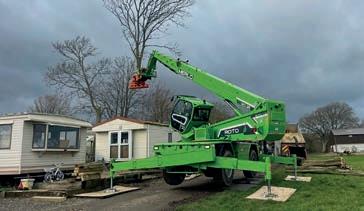


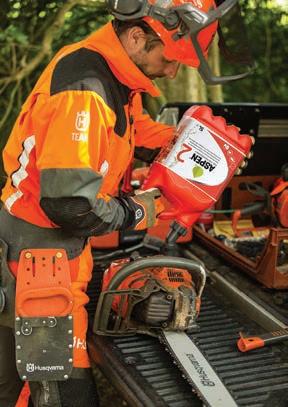

News Extra – new Bartlett UK facility
Green light for world-class arboretum and research centre in Berkshire
ARB Show 2024
Arborists applaud an outstanding event at Westonbirt
Interview – Tree Doctors’ Amie AND RUBY Taylor
Get to know this Kent-based thriving business with a family focus
Tree health with Luke Hailey
Biosecurity basics can help tackle the rising risks from pests and diseases
HSE Update – beware of chainsaw complacency
Top-handle models require high skills levels for safe operation
Tree consultancy –Matthew Rowden
Could the ash dieback catastrophe be man-made?
Top tips – why communication counts
Safety advice when in trees and on the ground from Josephine Hedger
Duncan
the causes of tree
Arborist opinion
Three professionals explain why they’ve invested in powerful machines
Spotlight on equipment safety
Leading providers give recommendations
Ask Alun
Tree surgeon, mechanic and retailer Alun
James has advice for those starting out
climbing gear
New launches from Notch and Sterling
Product DNA – EGO
The PGX professional charging system
Meet the Supplier – Outwear
The expanding PPE specialist provider
Fuel safety
Guidance from Aspen Fuel
Battery-powered tools
Stihl’s Reuben Wilson covers battery benefits – plus new chainsaw options
CTC Recruitment – careers clinic
Find out the routes into becoming an arboricultural consultant
Pro Landscaper Business Awards
Environment consultancy TEP has triumphed as the overall arb category winner
announcing G.Trott
Tree Consultancy
George Trott strikes out on his own
Arb in Action
Your photos showing incredible skills in trees – in association with Stihl

Lancashire-based Multevo has been appointed a Unimog dealer by Mercedes-Benz Trucks.
Unimogs are multi-purpose off-road vehicles that can be used by arborists for a variety of tasks such as vegetation management and working in challenging environments such as where there are power lines and can also be fitted with MEWPS.
Multevo, which also has depots in Shropshire and Staffordshire, offers a range of services, including arboriculture, maintenance and repair as well as hiring and selling plant. Its clients include local authorities, airports and highway maintenance contractors.
The company has an existing team of Mercedes-Benz trained technicians to service Unimog vehicles. multevo.co.uk
An additional £4m of government funding has been announced to expand a laboratory that will focus on UK biosecurity and tackle emerging tree health.
A joint statement from Defra, the Forestry Commission and Forest Research said the funding will pay for a research and containment facility at the UK’s Forest Research Alice Holt Research Station in Surrey.
It will expand the capacity of the existing Holt containment laboratory by almost double and boost capability to study pests and pathogens in a contained and controlled environment.
Statistics released by Forest Research show there were 2,350 tree pests and diseases reported via the TreeAlert online pest and disease reporting service from April 2023 to March 2024. Pests and pathogens will be assessed in a contained laboratory by scientists from Forest Research in a safe and controlled manner using cutting-edge technology and equipment to safeguard our treescapes.
Biosecurity minister Lord Douglas-Miller says: “The UK is a world leader in tree health

and biosecurity and today we are going further in boosting our armoury to combat tree pests and diseases and manage emerging threats.
“We are committed to protecting the country’s tree health and maintaining biosecurity to ensure our trees and woodlands are resilient to fight climate change.
“Building on the existing vital work of Alice Holt will be a key part to achieving this.” It was said climate change was leading to a rise in the number of pests such as the oak processionary moth.
The laboratory will also help prepare for known threats which are not currently present, such as Emerald ash borer – a beetle from Asia which has spread to North America and caused significant damage to ash trees – and Xylella fastidiosa, a serious bacterial disease which has devastated olive trees in France and Italy.
forestresearch.gov.uk
The Royal Forestry Society (RFS) has announced it can offer posts to 10 more trainees as a result of funding from the ALA Green Charitable Trust.

Forestry Roots is an initiative focused on inclusion to help students pursue career aspirations in the sector through placements and study. A total of eight RFS members will be hosting the trainees: Burghley Estate, Englefield Estate, Chatsworth, Hill Holt Wood, Leeds Coppice workers, Sherwood Forest Trust, Trees for Cities and Whitney Sawmills. All the positions are paid and are for one year. Applications close on 25 June and details of how to apply are on the RFS Jobs Board at the website: rfs.org.uk/jobs-category/forestry-roots
EGO Power Plus has announced a new heavy-duty grass trimmer and brush cutter as part of its battery-powered Pro X range.
The STX4500 Pro X loop-handled grass trimmer and the BCX4500 Pro X bikehandled brush cutter are fitted with a 1.6KW motor, have a 45cm cutting diameter with a 2.7mm line and rapid reload head.
According to EGO Power Plus, they are well-balanced for more comfortable all-day working.
Chris Buck, product manager at EGO, says: “Professionals need heavier-duty electric tools that have the power to work all day and the durability to last for years. Our new Pro X range brings the benefits of battery power to a market segment that until now


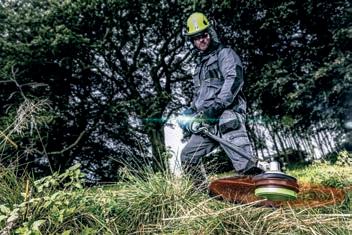

has had to rely on petrol tools –that is no longer the case.”
Both models come with a rear-geared motor and are compatible with all portable EGO ARC Lithium batteries. They feature a carbon fibre drive shaft that reduces weight while maintaining stability and strength. They are compatible with EGO’s metal brush cutter blades and its Rotocut attachment for tough tasks.
Other features include three working speed modes with a variable speed trigger allowing for maximum control for any task, adjustable harness points and tool-free handle adjustment. egopowerplus.co.uk
New community woodlands have been established in Durham by planting contractor Microsite. Around 24,000 mixed native trees and shrubs have been planted across nine sites, which also saw the involvement of schools and volunteers. The project was initiated by Durham County Council and aims to create woodlands to improve access to nature. Funding was facilitated in part by the North East Community Forest and Forestry Commission in England.
Microsite specialises in establishing and managing woodlands and forest ecosystems in the North of England alongside urban planting, including providing biodiversity net gain and social and environmental solutions.
Community engagement is also a significant focus for the company, which provides a range
of educational and volunteer events for schools, businesses, and local authorities.
Microsite founder, Peter Holder, says: “The project is in line with our ethos of connecting people with their local environments which

allows us to set an example to other SMEs how incorporating environmental and social value into our operations can have a direct economic benefit to our business and the community. Community outreach is a central part of what
Heartwood Tree Surgeons, which offers arboriculture and vegetation clearance services, has been acquired by investors Vermala Group.
The Warwickshire based arb firm has more than 20 years’ experience in arboriculture and vegetation clearance.
Vermala was founded to build a portfolio of UK vegetation management businesses and is funded by a group of SME investors and operators. It is looking for more acquisition opportunities to expand the group further.
Adrian Cook, the majority shareholder, says: “We are delighted to have completed the sale of Heartwood Tree Surgeons, which will allow the business to push on and develop for the benefit of its people and customers.”
vermala.co.uk
we do, so we were delighted to host around 800 school children, in collaboration with Outdoor and Adventure Education Service (OASES) as well as volunteers from the local community.”

A mix of both biodegradable and recyclable Tubex tree shelters supplied by distributor Trees Please were used to protect the saplings. Many community woodlands were established on the fringes of semi-rural villages where vandalism is an issue. While community engagement has significantly reduced vandalism, recyclable tree shelters were used in areas where vandalism is most likely to occur. microsite.co.uk

Simon N’jie, managing director of Artemis Tree Services, has taken part in the Fund4Trees Charity Bike Ride around Brighton in support of Fund4Trees, which promotes sustainable treescapes.
He was one of seven riders covering the 12-mile undulating course that reached an elevation of 250m. Joining Simon were Mike Connick from Connick Tree Care, four arboricultural consultants, and the event organiser, Russell Ball, who founded the charity in 2011.

The ride included two stops for young tree maintenance workshops at two schools, involving around 50 children, with the team helping clear weeds and add wood chip
around the base of some newly planted trees.
The riders also paused to meet elm tree expert Peter Bourne and Peter and Alastair Peters from Connick Tree Care, who shared insights about the surviving ‘Preston Twin’, The Preston Twins were the last of their kind in the UK, believed to be the largest and oldest English elms globally, dating back approximately 400 years.
A stop was also made at Brighton’s Racehill Community Orchard, where there are a range of native plant species.

Simon comments: “It was an incredibly enjoyable day. The enthusiasm from everyone involved was contagious. Cycling around Brighton and meeting such interesting individuals was a highlight. I’m certainly looking forward to participating in the next bike ride and eager to assist Fund4Trees in promoting their charity moving forward. Promoting tree planting and nurturing young trees is vital, and engaging with children gives us optimism for the future.”
More information about Fund4Trees can be found at fund4trees.org.uk and the Just Giving page is at: justgiving.com/fund4trees
Lauren Child, who created the Charlie and Lola picture book series, is promoting the Woodland Trust’s free trees scheme. Lauren also wrote the Clarice Bean Smile book, which highlights children’s anxiety over the environment. She recently attended a tree-planting event at a London primary school, and the former Children’s Laureate explained her own climate anxiety -she grew up in rural Wiltshire and has always featured trees in her work.

She is encouraging schools and community groups to make the most of the Woodland Trust’s popular free trees initiative.
Tewkesbury Borough Council in Gloucestershire has successfully pursued a prosecution after 100 protected trees were damaged at Warren Fruit Farm, Cheltenham last year. Michael Keeley pleaded guilty to damaging a number of trees, which occurred by doing trench excavation using a mini digger to bury overground service cables. The root system of 108 Lombardy Poplar trees were damaged and the row was subject to a Tree Preservation Order. Formal permission should have been obtained before the work. Keeley was fined £1,600 reduced from £2,500 for an early guilty plea, and ordered to pay an additional £1,569 in costs and a victim surcharge of £640, totalling £3,809.
Cllr Sarah Hands lead member for Clean and Green Environment says: ‘’We have one of the most impressive landscapes in Gloucestershire and we won’t hesitate to protect tree stocks as it aligns with our net zero and ecology ambitions. I hope the result will act as a deterrent to anyone who is considering acting illegally in Tewkesbury Borough.” tewkesbury.gov.uk
Torriano School, Kentish Town, is one of many schools that has taken free trees from Woodland Trust. Rose O’Brien, from Torriano, says: “Despite being in the heart of Camden, our school is a green oasis, and we were excited to add the free trees provided by the Trust.”
Steve Dewhurst, from the Trust, says: “As an inner-city school there is limited green space, but it shows there is no space too small to get trees in the ground.” woodlandtrust.org.uk/freetrees

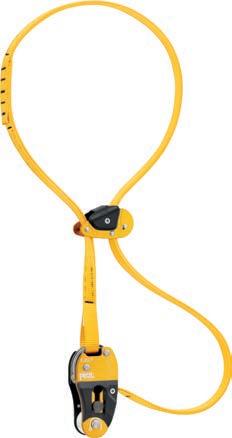



Beingeffectiveinyourdailyworkasanarboristmeansmasteringadvancedtechniques andhavingthebestequipmenttoefficientlymovearoundandpositionyourselfinthe trees.Here'sWaldoEtheringtoninhiselementatStourheadArboretuminWiltshire.


Beingeffectiveinyourdailyworkasanarboristmeansmasteringadvancedtechniques andhavingthebestequipmenttoefficientlymovearoundandpositionyourselfinthe trees.Here'sWaldoEtheringtoninhiselementatStourheadArboretuminWiltshire.
Beingeffectiveinyourdailyworkasanarboristmeansmasteringadvancedtechniques andhavingthebestequipmenttoefficientlymovearoundandpositionyourselfinthe trees.Here'sWaldoEtheringtoninhiselementatStourheadArboretuminWiltshire.

A NEW ARBORETUM AND RESEARCH CENTRE IS UNDERWAY IN BERKSHIRE TO DEVELOP AND DEMONSTRATE THE LATEST IN SCIENTIFIC TREE CARE BEST PRACTICES
Bartlett Tree Experts has announced it will be opening a major new centre in Berkshire to include the development of new research laboratories and an arboretum. The new facility will serve as a world-class research and educational centre for Bartlett clients and arborists in the UK and Ireland, including research, diagnostic, office and lecture space. The arboretum will surround the laboratory and be a ‘living museum,’ featuring environmentally tolerant collections of rare and

unusual trees and other woody plants, woodland walking trails, and native wildlife habitats.
The grounds will also provide testing plots for long-term arboricultural research trials and

study. The site is based at Spencers Wood, a village in the borough of Wokingham, and four miles from Reading. Construction will start at the end of this year, and it will open in late 2025.
Robert A Bartlett, Jr, chairman and chief executive officer of Bartlett Tree Experts, says: “Developing our new arboretum and research lab in the United Kingdom will provide our research scientists and plant pathologists with the enhanced, state-of-the-art capabilities to conduct the most advanced research and testing, allowing them to advise our arborists on the latest advances in arboriculture.”
According to Patrick Franklin, vice president of special operations: “We are excited to make this investment in a new lab and arboretum in the
United Kingdom. The location will provide a perfect foundation to create a thriving space for the study of trees. We look forward to seeing the botanical wonderland that will thrive here and the advances our continued plant healthcare research will bring for clients and arborists.”
A company statement said a scientific approach to promote tree health was more important than ever, citing the impacts of a warming climate have increased the risks of detrimental plant insects and diseases worldwide, posing significant risks to environmental sustainability and the health of trees.
Planners have accepted the application for change of use at the 50-acre site and the project will be led by an expert team, including


some 20 Bartlett arborists and external specialists, Snug Architects, landscape designer Harris Bugg Studio and landscape architect, UBU.
Richard Trippett, vice president of Bartlett’s operations in the UK and Ireland, says: “There is a great deal of excitement around this project, to create an arboricultural research
We look forward to seeing the botanical wonderland that will thrive here and the advances our continued plant healthcare research will bring for clients and arborists
and knowledge hub in support of our Bartlett arborists, as well as an idyllic location filled with specimen trees to bring people together for client workshops and training. I am thankful to Robert Bartlett for offering our company and industry colleagues the opportunity to create this special place for arboricultural research and learning.”
Jon Banks, research lab manager, described the project as an exciting opportunity “to create an arboretum and research lab from the ground up.”
For more information visit: bartlett.com

A long history – meet Bartlett Tree Experts
Bartlett Tree Experts is family-owned and was founded in the United States in 1907 by Francis A Bartlett. He was a dendrologist (a scientist who studies trees) and academic who was teaching in Virginia, before relocating to New York, at the request of a benefactor. to deal with many valuable shade and ornamental trees that were declining and dying.
He also opened the Bartlett Arboretum and Gardens at his home in Connecticut, along with a research laboratory and, in addition, a larger facility in North Carolina. He was the first to use power spray equipment to manage landscape pests and to develop practical cabling and bracing methods to reinforce structurally weak trees.
The RA Bartlett Tree Research Laboratories & Arboretum in Charlotte, North Carolina, opened in 1965, with an additional new lab building constructed in 2022. Bartlett’s scientists work in fields such as plant pathology, entomology, genetics, and horticulture with molecular testing and other advanced diagnostic and research
capabilities. There are over 366 acres of tree and other woody plant collections and ongoing research trials, with expansive collections of over 26,000 accessioned plants in 14 major groups. The arboretum holds one of the largest collections of holly in the US, along with extensive collections of elm (Ulmus), crape myrtle (Lagerstroemia), maple ( Acer ), witch-hazel (Hamamelis), linden (Tilia), and boxwood (Buxus).
A total of seven collections are accredited through the Plant Collections Network (a group of North American botanical gardens and arboreta), including the largest collection of Magnolia cultivars in the world. In 2022, Bartlett Tree Experts purchased a 17-acre arboretum and research lab site west of Portland, Oregon, in Cornelius, with more than 1,000 accessioned plants, including conifers, maples, dogwoods and rare species from around the world. Bartlett has teams based in East Grinstead, Beaconsfield, Bedford, Cheltenham, Manchester, Bristol, Radlett, Sevenoaks, York, Guildford, Chelmsford, New Forest, East Midlands and Dublin.

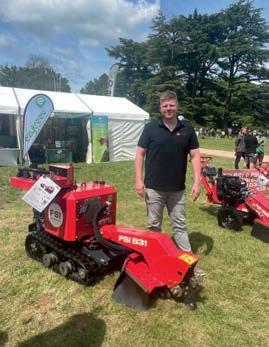




THIS YEAR’S EVENT PROVED A TRIUMPH , SHOWCASING TREE CARE IN ITS MANY FORMS AND PROVING AN UNRIVALLED OPPORTUNITY TO CONNECT ARBORISTS AND KIT SUPPLIERS - AND THE WEATHER WAS JUST THE ICING ON THE CAKE

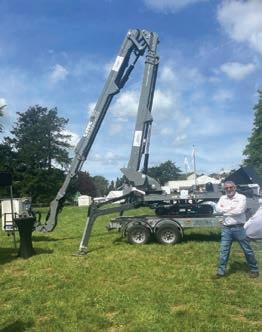


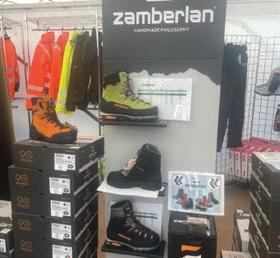


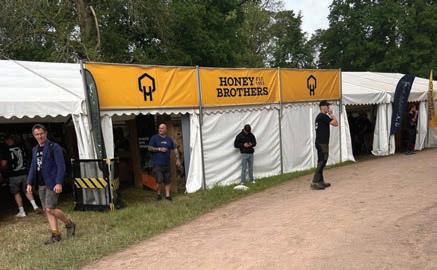



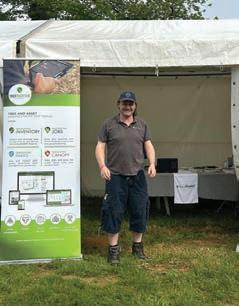


Glorious sunshine shone on Westonbirt, The National Arboretum, over much of the two days when this year’s ARB Show took place, adding to the sense of enjoyment for all in attendance. An outstanding exhibition – Först was the headline sponsor – attracted big names, newcomers and a host of affiliated suppliers. This is the premier event for arborists, who attended from around the UK. There were competitions, demonstrations, plenty of retail therapy as well as learning in the form of workshops and a new education and careers hub. For all those who were there, this will certainly be one to remember.







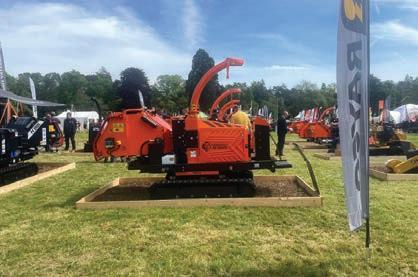
OFFERING TRADITIONAL HIGH LEVELS OF SERVICE WITH A MODERN TWIST, THIS KENT BUSINESS RUN BY AMIE AND PAUL TAYLOR NOW BENEFITS FROM THEIR DAUGHTER RUBY’S TALENT
Ruby Taylor is a rising social media star – and probably doing more to put arb on the map than any formal industry initiatives. Simply by being herself, she shows what working in the sector is like. Check out her YouTube channel – Ruby TreeDoctor – and you can see her visiting the ARB Show, showing what’s in her kit bag and the day in the life of a climber on an emergency call out. Ruby works for Tree Doctors, based in Whitstable, where her mum Amie is a director, alongside her dad, Paul. This is a family business that is founded on traditional values of trust and hard work. Customers are loyal to Tree Doctors and in reviews, praise the company’s arborists for their skills as well as the fact they always clean up after a job.
From small beginnings and its launch in 2002, Tree Doctors is now a highly successful business as Amie explains how the firm started out: “Paul and I are from South London and he worked for around seven years for local
authorities, gaining a wide range of experience – he’s a really skilled tree surgeon and knew he wanted to set up on his own. We decided to move out of London, so Paul sold his
we encourage people to be individuals – we like people with a sense of humour and who have a good work ethic
house to move to Herne Bay for a safer environment for our children.” Amie also sold her property in Whitstable to fund the startup of their business.
Tree Doctors started by focusing on private work. “We did not want to target local authorities and get caught up in a downward spiral of tendering. Instead, we sought to provide good service and in winning repeat business because homeowners would know we would turn up and do a good job for them.

“Some of our customers are more vulnerable, so they could be elderly or disabled and they know we are reliable, and they can trust us when we’re working at their properties.”
The company does still provide work for a broad range of clients – including businesses, schools, hospitals, railway, estate agents and builders.

There is now a team of 11 staff and Amie says this may increase slightly, but there are no plans to grow much larger. “We do sometimes use sub-contractors who get on well with the team but we’re quite happy with the size we are. Overall, we encourage bringing on young talent and supporting them individually.”
Working hard is something the whole Tree Doctors team is committed to, and Amie says in the early days, Paul would take on many jobs himself, making sure he got to know customers and building relationships. Amie has always played a key role in running the business – as well as previously working as a police dispatcher. The couple also have four children aged from five to 21, with Ruby being the eldest. Manager, Kyle, who entered the business at 19, is also key to the business and has now been with the company for almost nine years.
The team

For a new business, pricing can often be challenging as being cheaper can be a way to gain work, but this was not the route Tree Doctors wanted to take. Many customers say they believe Tree Doctors prices are competitive, but Amie says from the start there was a determination to price correctly. “We don’t want to compete with one man and a van with no insurance. We don’t do bartering and it’s not uncommon to see requests on local Facebook pages trying to get tree work done at the lowest price – this is not the work we want.”
Tree Doctors is also known for the skills of its climbing arborists, showing on its website and social media its reductions and removals –and one of the firm’s arborists, Joe Ekins, was featured on Pro Arb’s cover as well as winning the prize for our Arb in Action page.
Amie notes that the business continues to invest in kit, favouring Forst for wood chippers, Stihl for its chainsaws, Silky saws, as well as being ambassadors for Marlow Ropes –working with the company to test and give feedback on new products.
She adds that Tree Doctors also works with other firms for more specialist services. “We pass on business to firms we trust that provide stump grinding and Mewps – it’s a way of working that’s effective and means we can focus on our core skills.”
Tree Doctors brings on young trainees, taking on apprentices, and this is where Ruby also gets involved. As Amie says: “She’s patient and is a natural at passing on skills – we all love to see people develop and that’s led to team members taking on more responsibility and being promoted.”
Over to Ruby
Ruby says it was the pandemic that prompted her to consider becoming an arborist, even though her parents ran a tree care firm. “Covid pushed me out of my comfort zone,
and I thought arb was largely a male career, similar to being an electrician or bricklayer.”
She spent a couple of years training via an apprenticeship and gaining her tickets; this included study at Plumpton College.
It’s clear from the social media work that Ruby is a huge fan of arb. She explains: “What I love about the job is how challenging it is; every day you’re learning something new and finding new ways of doing things. I don’t find the job being high risk an issue – when I first started, I was terrified of everything potentially going wrong but over time I find the risk exciting now and I enjoy the adrenaline.”
She says that women do face challenges and there can be criticism and even abuse directed at those who work in arb – as can happen in other male dominated sectors.
“The lack of women within the trade doesn’t bother me, because every day through social media, I have women reach out expressing interest and seeing more and more start out in arb and I absolutely love it! I have experienced sexist behaviour through the years, including from customers, colleagues and strangers on the internet. But I just find it motivating and determined to prove them wrong.”
While social media can be toxic, it can also be supportive, and Ruby
says she is in regular contact with women working in a range of trades who offer each other support and advice. “My advice for anyone wanting to go into arb is to message people. This community is extremely supportive and will always help point you in the right direction.”
This community is extremely supportive and will always help point you in the right direction
As Ruby continues to show, she too can evidence that arb can provide great career opportunities, all the while working for the family firm.

Ruby Taylor


AWARENESS OF THE DISEASES AND PESTS THAT CAN AFFECT TREES, PARTICULARLY AT AN EARLY STAGE, IS A VITAL SKILL FOR ARBORISTS - LUKE HAILEY HAS GUIDANCE ON HOW TO BE AN EFFECTIVE DETECTIVE
Biosecurity is the prevention, detection and action against non-native organisms coming in through various pathways, and to keep both trees and arborists safe, it’s important that these measures are in place to prevent further ecological damage. The array of invasive organisms impacting trees currently confirms we need to improve these efforts and fundamentally; we must understand a threat to prevent it. As trees and shrubs can be harmed by a plethora of organisms such as insects, nematodes, fungi, bacteria, and viruses, there’s a lot of biology to understand to implement comprehensive biosecurity practices for them.
Check out Observatree
However, you don’t need to be an expert to make a difference. The Observatree project (observatree.org.uk) is a good place to start if you want to keep updated on key tree threats. It is an early warning system for tree health and based around citizen science – the website provides diagnostic guides for trees, covering their symptoms.
The Forest Research (forestresearch. gov.uk) and RHS (rhs.org.uk) websites are also useful resources for further learning. Understanding which issues could be present on a particular plant species can help you know what issues to pay attention to and what measures are appropriate to control the risks. Forest Research’s TreeAlert can be used to report suspected instances on trees, while
it all about?
issues on shrubs are dealt with by the Animal and Plant Health Agency (APHA). Many arborists we speak to are concerned they will bring negative attention to themselves by reporting issues, but in our experience the response is the total opposite. Early detection is a key tenet of biosecurity as smaller problems are easier to control and arborists can play a vital role. We access many more plants and sites than the small proportion which government inspectors can check themselves.
Early detection is a key tenet of biosecurity as smaller problems are easier
to control and arborists can play a vital role
Sanitation and reducing the risk of spread are also fundamental biosecurity principles. Pests and diseases can easily be transported between sites in soil and plant material. Sanitising tools, boots, and vehicles between branches, trees and sites, as appropriate, reduces risks. Simple tools like boot picks, disinfectant, and large containers for boot washing can be utilised to reduce risk of spreading organisms. Sealable sandwich bags, bin bags, and tape can be used to contain suspected material and submit it to biosecurity inspectors.
Prevention is key
The movement of wood, especially with attached bark, is a particular risk for tree pests and diseases such as bark and wood-boring beetles and fungal cankers. I’m also often told stories of someone inadvertently introducing honey fungus into their garden by collecting logs from an infected tree. Prevention is better than control, which means planting stock should be purchased from reputable suppliers, avoiding imports where possible. Imports should be quarantined for an appropriate time by the supplier, dependent on the incubation time of potential issues.
Supplier certification schemes like Plant Healthy help to improve practices and reduce the risk of new problems being imported and spread. Inspect plants for signs of ill health, pests, and diseases before accepting them. ‘Right tree, right place’ planting and avoiding monocultures also make landscapes more resilient.
While biosecurity can sound like a lot of work, most of the fundamentals are fairly simple and can be applied easily. Staying informed and up to date is essential, but in my experience, many arborists will already like learning about tree stuff anyway!
Luke Hailey, PhD, is the lead diagnostician and a researcher at the Bartlett Tree Experts Research Lab which services the UK and Ireland. He identifies tree and shrub issues and helps guide their management. His current research focuses on honey fungus management. bartletttree.co.uk
Overseas predator:
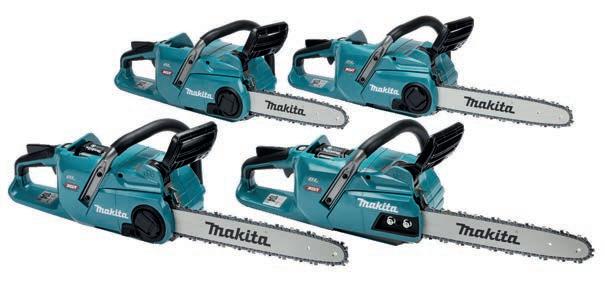

TOP-HANDLED MODELS CAN BE COMPACT YET POWERFUL AND SO REQUIRE A HIGHER LEVEL OF SKILL TO OPERATE AND MAY ALSO HAVE ADDITIONAL MAINTENANCE REQUIREMENTS, WHICH MEANS TRAINING MUST BE PRIORITISED
Pressures of work, such as with widescale ash dieback tree removal, may result in some arborists struggling to find time to fit in chainsaw training, both for trainees and experienced staff.
But, as the case of Karl Spafford shows, a lack of training can have serious consequences. He was working at a height of 30ft in a tree, using one hand to hold a branch and the other to cut with a chainsaw. Kickback occurred and he was cut by the chainsaw on his forearm, resulting in a severe injury. His case was taken on by Fletchers Solicitors, which engaged in a four-year legal action.
Spafford was no longer able to work as a tree surgeon as, following surgery, he was left with permanent pins and needles in his arm and chronic neuropathic pain, along with significant reduction of grip strength and scarring to his left arm.

Spafford won his case, and it was found his former employer had not provided him with adequate training; notably, refresher training should have been given to prevent staff becoming complacent. They should have been reminded to try and use two hands where possible when using a chainsaw, even though working one-handed can mean a higher work turnover. Spafford says: “I lived and breathed
my job. I was known for being able to go further and higher than other people. Had I been trained more I wouldn’t have been complacent, and it would have been drilled into me to use two hands. I really just want to speak out to try and stop this from happening to anyone else.” He was also affected mentally and received counselling for PTSD to deal with flashbacks and anxiety but is now working in children’s care.
What the HSE advises
The HSE provides guidance on reducing the risks from tophandles chainsaw use:
● Saw selection and maintenance
Not all top-handled chainsaws are the same, with variations in weight, balance and handling characteristics.
Arborists should carefully investigate which is suited to their level of experience and the work they need to do. They should also be knowledgeable about using the appropriate bar, chain and sprocket combinations. These will impact on cutting efficiency, kickback potential and overall handling characteristics. Only those recommended by the manufacturer should be used.
Regular maintenance is essential, and a saw should not be used if it is in any way defective.
● Planning and preparation
Work should be assessed beforehand with a view to determining the following:
(i) Is it necessary to climb the tree?
(ii) Can the work be done from an access platform?
(iii) Are the correct levels of staff, supervision and equipment available?
(iv) Are there aerial rescue and contingency plans in place?
The HSE points out that risks should not only be considered for the climber. It states that the chainsaw should be sent aloft “using a failsafe system”. This should normally be done by fastening it to the harness before removing from the haul line and ensure ground staff are outside of potential drop zones if the saw should fall.
It adds that smaller cuts may be completed with a handsaw, rather than a chainsaw. Where a chainsaw is necessary, the HSE advises a secure and stable work position is established before hauling the saw into the tree, starting and cutting. It adds the saw should be started “with the chain break on, away from any obstructions, including climbing ropes and associated equipment and in most circumstances, the saw should be used with two hands.”
Before cutting, the timber should be assessed “with a view to identifying compression and tension, foreign objects such as nails or wire and other parts of the tree which the saw could inadvertently contact and cause kick back.”



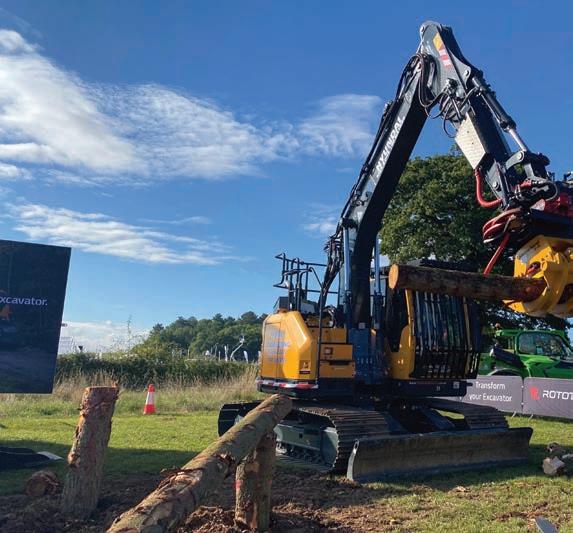


CONSULTANT MATTHEW ROWDEN HAS QUESTIONS TO ASK ABOUT THE ORIGINS OF THIS DEVASTATING TREE DISEASE INCLUDING WHETHER ITS ARRIVAL COULD HAVE BEEN DELIBERATE RATHER THAN ACCIDENTAL
Arborists will be in frequent contact with ash dieback, often being required to take remedial action on affected trees.
Hymenocyphus fraxineus – also known as Chalara – has reshaped the landscape of Northern Europe, decimated habitats for generations, destroyed woodlands and was estimated to have cost UK citizens £15bn.
But here’s the thing: When a mysterious disease arrives out of nowhere from Asia, having never affected anything beforehand and then nonsensical measures are brought in to control it, it is important to ask the question: Cui bono? Or, as this phrase means, when it comes to identifying suspects, ‘to whom is it a benefit?’

comfortably alongside Fraxinus mandschurica (Manchurian ash) and Fraxinus chinensis (Chinese ash) for millennia, only moderately affecting them. The disease is fungal, with the spores colonising the trees’ vascular system, causing brown lesions on the underside of unions, defoliation and death. The fruiting bodies form in the leaf litter, and the spores are spread by wind. The fungus only affects the Fraxinus genus.
with astonishing incompetence, movement of plants, timber and dunnage was not halted and the disease spread throughout the continent
There’s no doubt that ash dieback has made some wealthy. But, firstly, let’s go back to what this disease is, where it came from and why it’s here. It’s said ash dieback disease originates from China and has coexisted
Ash dieback was discovered in Poland in 1992, whereupon it spread through Northern Europe, reaching the UK in 2006. By 2012, it was recognised that we had a serious issue: there was a ban on all imports and by March of 2013, a Chalara management plan had been thrown together.

Then what? Well, since then, many local authorities have had a scorched earth policy for any ash trees in high target areas, whether affected or not. BS5837 categorisations automatically drop ash trees down one category, while large estates have had huge felling licenses granted that they would never have gained before 2013. Further, major
This was one of the first cases of Ash dieback I worked on back in 2013
contracts have been awarded in some cases to relatively unknown contractors for clearance of ash trees and it would appear a substantial portion of this cost has been borne by the British taxpayer.
So, does this all sound pretty familiar? Having been in the industry since before this disease arrived, you’ll forgive me for smelling a rat.
Who failed to take action?
There are several plant protection organisations, starting with the ICPP (International Congress of Plant Pathology) signed in Rome in 1929, followed by the establishment of the IPPC (International Plant Protection Convention) in 1951. There is also a European organisation, and we have Defra and the Forestry commission in this country. Europe has traded with China for over a thousand years via the Silk road, and yet despite all the sanitary and phytosanitary regulations implemented since 1951, ash dieback still managed to make it into Europe? Many may wonder why now and why not a thousand years ago?
we have a fungal disease in this country that only targets one genus, has only appeared since 1992, and bears some hallmarks of being man-made
The sudden appearance of the fungi with such virulence, selective targeting and fatality rate is arguably suggestive of it being synthesised in a lab, not an evolutionary leap from Asia to Europe.
Finally, the impact it has had in the UK is hugely significant – some 90% of ash trees will be lost to this disease, whether due to death, or preventative felling on estates where the value of timber considerably outweighs the perceived value of native habitat for our flora and fauna.
Then we move on to how it was handled in Europe. Each country has their own version of Defra, and yet with astonishing incompetence, movement of plants, timber and dunnage was not halted and the disease spread throughout the continent. In the UK, we watched from the sidelines and did precisely nothing. The Horticultural Trades Association requested an import ban in 2009, and yet for another three years, Defra and the Forestry Commission sat on the crisis, hoping it would go away. The management of this has been at best, risible. How could so many different institutions fail quite so spectacularly?
Then if we look at the organism itself, there are very few fungi that only affect one genus, with no collateral damage. It’s not in the interests of any pathogen to kill its host, yet this does, quickly and effectively. The fact that it seems to affect a relatively high yielding timber product must be coincidence, surely?

This spread of ash dieback has been very good for some. Not least, some tree surgery companies have expanded considerably because of a rising demand for felling. Landowners have been able to realise their yields on sites where a clear fell approach would never normally have been permitted. Developers have been able to fell high value trees that wouldn’t have been permitted normally. Further, biomass producers and forestry operatives have benefited greatly.
However, the loser here is the British taxpayer, since so many of these trees are highways or council owned, and they’ve been felled with scant regard for the possibility of natural immunity, with the bill for their removal footed by the public.
To summarise, then, we have a fungal disease in this country that only targets one genus, has only appeared since 1992, and bears some hallmarks of being man-made.
We also have a succession of organisations that were supposed to protect
the plant population of the UK, Europe and the world and who, in my opinion, have behaved with such incompetence at every level, that it’s not a huge leap to guess that the lackadaisical approach was deliberate. Then we have the beneficiaries: with once again, money being funnelled from the UK taxpayer into private hands. It’s a case of problem-reaction-solution, and it’s a tried and tested formula.
If this is the case though, the question is, who did it – and why?
Matthew Rowden ProfDipArb ABC L6, NatDipArb BTEC L3 has over 20 years’ experience within arboriculture and runs Rowden’s Tree Consultancy and Training
Working up in the trees is a highly rewarding but dangerous job that needs to be carried out with a lot of care and consideration to ensure the whole team’s safety. Even for the most trained and experienced professionals, it can be easy to forget about key protocols that should be in place every day. Yet, the HSE found that tree work has a major injury incidence rate higher than that of the construction industry.
For every business, an extensive risk assessment should be in place to avoid injuries to third parties and team members. Everyone should understand this assessment and be working towards the same goal to keep each other safe.

should be at chest level before anyone goes into the drop zone. Ask the grounds person to communicate with the climber to ask if it is safe to go into the drop zone to cut and remove branches – never presume the climber knows they are there.
For every business, an extensive risk assessment should be in place to avoid injuries to third parties and team members
As soon as you arrive on-site, good communication is key. This includes being clear about the task, where the drop zone is and ensuring everyone is aware of where this is. Clear communication is important at every stage of the operation, whether this is rigging or freefalling branches, lowering equipment such as chainsaws or even removing items which are untethered from the harness such as rigging blocks.
An effective rule is to ensure the drop zone is clear before anything could fall into it by giving a verbal warning of ‘stand clear’ or ‘loose equipment’ and wait for a response from the grounds person that it is clear to continue. Anything coming down, whether rigged branches or a piece of machinery,
Ground staff can be new to the field, such as students or apprentices, so it is imperative their mentor keeps them safe. Failing to do so will have a severe impact on not only them but the full team. When it comes to rigging, it’s often presumed the system, equipment or tree won’t fail. This certainly isn’t the case and it’s a good habit to prepare for the worst-case scenario and plan accordingly. If the site is tight on space and requires the grounds person to be within the drop zone to hold the rigging rope, try and plan the set-up by diverting ropes with a pulley system at the base of the tree and allocating enough safe space for everyone to stand on the ground.
In the UK, we have a culture of dark colours for workwear, which are not effective when working in the forest or up in the treetops. It’s crucial all team members have sufficient high-vis PPE including jackets, trousers, and helmets so they are visible even when in the periphery. It can be even harder in the summer when the sun is shining and trees are full of lovely green leaves, so make yourself as visible as possible.
Working in a calm and quiet environment is so important for allowing successful communication and ensuring arborists are not stressed or rushing around, as this can lead to mistakes. Battery chainsaws, such as the Husqvarna 542i XP, are quieter than their petrol counterparts, significantly reducing noise levels in an urban environment and making the site a lot less stressful. This, paired with communication helmets such as Husqvarna’s X-COM Active, means the climbers and grounds staff aren’t shouting over each other to communicate and can easily talk to members of the team as and when they need to.

I truly can’t highlight enough the importance of safety and communication when working in arboriculture. There is plenty of guidance and resources available from the HSE and the Arboricultural Association to ensure best practices are put in place. Keeping skills up to date with refresher training is another great way to learn new skills and refresh old habits that may have slipped over the years. As a highly skilled profession, we all need to take the time and care to ensure a successful and safe working environment.

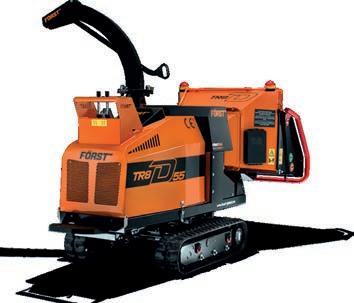


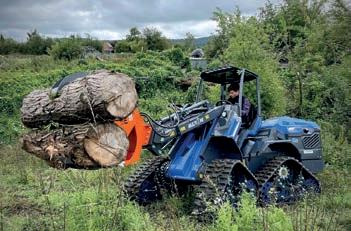
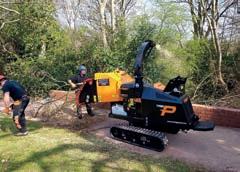
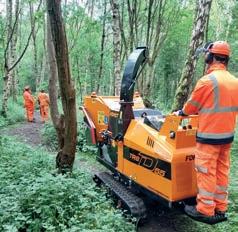



Risks from trees to people are low – there is an average death rate of five to six people a year in the UK caused by tree failures, according to research in the Journal of Risk Research (Ball & Watt).
So, a crude estimate for the current population would suggest being killed by a tree or branch is about one in 10 million. However, there are caveats, like damage to property and infrastructure and nonfatal injuries, where it is not possible to apply an average.
It would be ideal if we could accurately assess the ‘factor of safety’ of component parts of a tree, much as engineers do for built structures
So, while the risk of a fatality is low, individual trees can present high risks due to poor structure or due to its particular situation.
Because there is variation, hiring arborists to provide assessments is justified, as is the need for scientific investigations on what tree structures are capable of bearing, with or without defects and/or decay.
It would be ideal if we could accurately assess the ‘factor of safety’ of component parts of a tree, much as engineers do for built structures. We are still far from achieving this but should strive towards it.
and ‘central tendency’
There have been theories about how to assess trees with hollowing stems over the last four decades, in terms of the likelihood of failure.
There have been advances here, with assessing the basic proportions of wood remaining versus the extent of the cavity/ hollow, to currently considering the section modulus of the hollow section compared to a reference section set a little above the column of decay (research by Frank Rinn). However, we have a way to go – because we also need to consider wood quality and the tree’s structure loading.
Scientists found in terms of wood quality, mature trees tend to hollow out, so their outer stem wood consists mostly of mature wood, with a low proportion of juvenile wood.
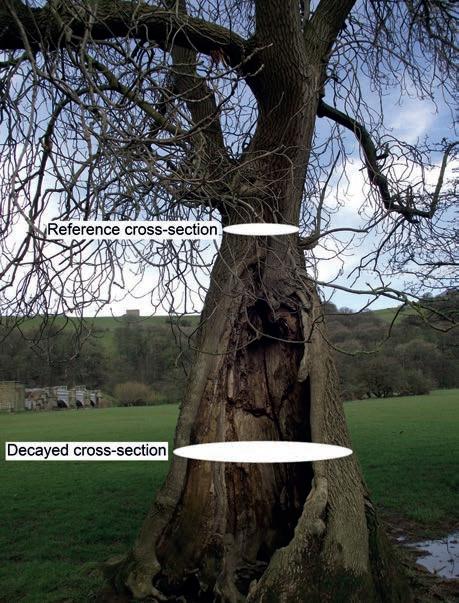
Reference cross-section
Decayed cross-section
Decay in a tree stem is often associated with additional growth. To make a fair comparison of the load bearing capacity, one needs to compare the bulged and decayed section with a non-decayed reference section of the tree’s stem
In addition, decay agents struggle to invade functional sapwood, which, again, lies at the outer edge of the tree’s stem, with more easily invaded dysfunctional sapwood (and potentially heartwood) situated further into the stem. The outer wood, forming the ‘shell’ around the hollow may also have qualities of reaction woods – denser, tougher, stronger, and more resistant to splitting than the ‘normal’ wood a tree lays down.
This explains why many hollow trees persist. One effect of these heightened
defensive qualities of the outer wood of such trees is one often gets to see what I call ‘central tendency’ – when decay occurs in the tree’s stem. This tends to feed upon the inner dysfunctional wood, up and down the stem, hollowing it out so it becomes like a pipe. Examples of this tendency of fungal decay to eat out the centre of living trees can be seen where there is one-sided root decay in a tree, but just higher up the stem, the cavity is often approximately centrally placed.
Arguably, theorists influencing the industry have spent too much effort on assessing the likelihood of failure of hollowing stems, when there are a much wider range of tree failures that occur which are relatively unexplored by science – the failure of hollow stems is not the most common form of tree failure. Trees more often fail by being uprooted, branch failure, or failure of bark-included junctions. Even if we stick to the topic of stem decay, decay at the edge of a tree stem has received only limited assessment, compared to when a tree is hollowing. This is a shame, as decay at the edge of a tree’s stem or branch can have a lot more influence on that component’s factor of safety, potentially lowering it substantially.

Failure of a branch of a semi-mature field maple due to previous squirrel damage. Although associated dysfunction and decay looks superficial, decay at the edge of a limb or tree stem can substantially reduce the factor of safety of the damaged component.
Academics (Smiley and others) progressively cut away outer sapwood from trees during pulling tests, finding that wood removed at the outer edge of the tree’s stem had double the effect of lowering the bending resistance of a tree
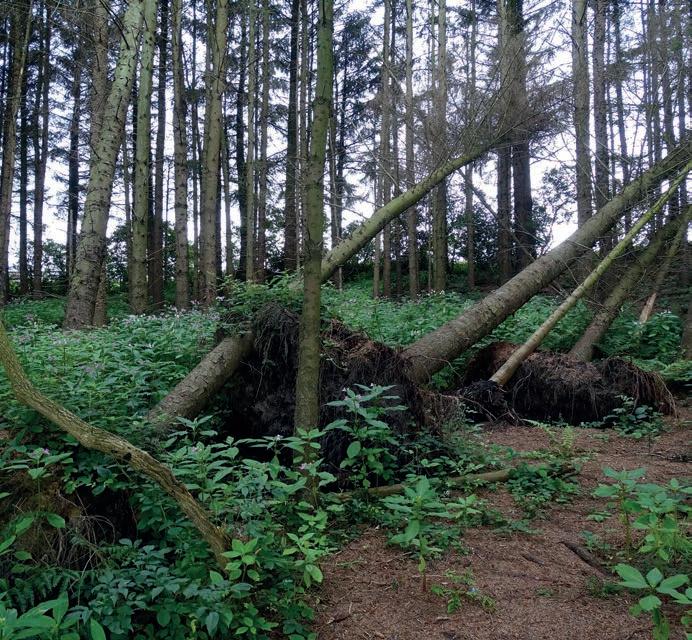
stem, compared with wood loss due to an internal cavity. However, it would be good to assess real specimens with real decay scenarios, rather than rely on this one-off artificial experiment on a small number of trees.
Another neglected risk area is that trees are often growing alongside other trees – in avenues, groups, shelterbelts and woodlands. As a forestry student, mutual shelter within a forestry plantation was a primary topic I was taught. But the influence of mutual shelter is rarely brought up in arboricultural teaching. It would seem there is heightened risk of branch or tree failure in an urban tree when a neighbouring tree of a similar size is cut down.
In one woodland where two mature trees were removed – and within four years – two large limbs failed in adjacent trees: probably not a coincidence. Similarly, I had the experience of one tree failing at its roots – then, in another storm a couple of years later, the adjacent tree was windthrown.
We should be aware removing one mature tree situated right next to the crown of another mature tree is likely to increase the wind loading to the remaining tree, and increase the likelihood of a component failure in that tree, at least until it acclimates to new conditions.

large dead tree
Dead and dying trees decay at different rates – the species of that dead tree can have a big effect – but at some point, they become too precarious to climb.
With ash dieback, branches can become problematically brittle over a relatively short period of time due to white rot occurring as branches and stems of infected trees die.
However, some arborists may not be aware a MEWP should be used for pruning or removal tasks. A few years ago, I heard of a local tree surgery firm failing AA accreditation as they started to climb a severely decayed tree.
We need a ‘Dead Tree Awareness Week’ –lay people can have no idea a tree under their ownership is dead and needs reducing or removing.
Two scientific methods combined are the way forward in understanding tree failures and associated risks. Large cohort studies of trees, especially surveying after storms, can help highlight what are the most frequent failure forms and what visible signs (if any) there may have been of use to the arborist to predict the failure. Controlled scientific experiments have a role, testing component parts of trees and improving
Research enlightens
Work from scientists has informed changes in the ‘hollow tree debate’ over the years and my own research has dispelled several myths about branch junctions – with or without bark included in them. I have dedicated 12 years to studying and experimenting with branch junctions – and a more clarified picture of branch junction anatomy, likelihood of their failure and the weakening effect of included bark can now be taught.
I discovered ‘natural braces’, which form in many trees, are the primary cause of many bark-included junctions. This explains why a bark-inclusion can often form and gives good ‘tools’ about how to avoid these weakened junctions forming or failing, depending on tree management timing.


At the base of this grey alder is a bark-included junction. However, the likelihood of the failure of this weak junction is low, because the two stems connected via this junction are connected by a natural brace higher up. This is no coincidence: the natural brace formed has caused the bark-included junction lower down – as that junction has experienced little-to-no movement, so not enough mechanical stimulus to grow to be a strong junction.
modelling so one can calculate the factor of safety of a suspected defective part.
We need our knowledge gaps filling on the likelihood of failure of different component parts of trees – to the extent we can confidently give a factor of safety to an inspected component of a tree. Even so, tree risk predictions will remain inaccurate and that is because a key element that causes tree failure is inherently unpredictable – the weather…
Dr Duncan Slater is senior lecturer in arboriculture at Myerscough College. He holds six university degrees, including an MSc in Resource Management, an MSc in Environmental Management and a PhD in Plant Sciences. However, as he says, there is still much more to learn about trees, ecology, mycology and care of this planet. dslater@myerscough.ac.uk


Greenscapes provides tree works all around the UK, and specialises in the mechanical dismantling of large, dead and dangerous trees, using equipment to enable this work to be done safely and efficiently with a Merlo Roto 55.35 S-Plus and Westtech CS 750 smart grapple saw attachment.
Director Jude Ridler explains: “With this combination, we can dismantle large and dangerous trees without the need for a climber to be in the tree. The Merlo has a 35m reach and a max lifting capacity of 4950kg and the machine can be used as a crane, a grapple saw, a forklift and a 35m cherry picker, to name just a few of its applications.
“The operator first selectively grips parts of the tree and holds the piece chosen for cutting securely in its jaws of the grapple.
INVESTING IN TOP QUALITY AND POWERFUL EQUIPMENT IS AN EFFECTIVE WAY OF TURBO CHARGING YOUR BUSINESS, AND ALSO ENHANCES SAFETY, AS A NUMBER OF ARBORISTS HAVE DISCOVERED
Once secured, they can deploy the saw component on the grapple to cut free and lift these cut portions away from the tree and safely to the ground effortlessly and with complete control. Once the removed section of the tree is safely placed on the ground and released, it can be processed, chipped and cleared away. The grapple saw has the ability to cut up to 750mm, meaning few trees can't be tackled with this method.”
He sourced the Merlo through local dealer Stubbings Bros, with finance provided by Close Brothers and the Westtech from Alan Marshal at Marshall Agricultural Engineering in Sussex. Ridler says both have been first class with the technical support, set-up, and implementation of the equipment.
He points out grapple saws were typically only seen attached to large forestry equipment, but more are now finding their way onto smaller machines that can be driven or transported on standard roads and used in urban areas.
Ridler says this type of kit now provides an alternative to climbing and working on platforms and speeds up work such as roadside ash dieback removal as well as reducing disturbance for motorists. “We removed 35 ash trees in one day at
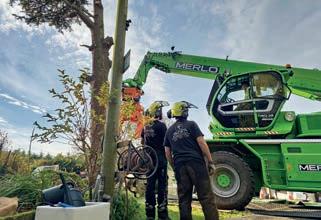
a holiday park recently. Compared to weeks of climbing, the disturbance and the difference in safety are light years apart.

the machine can be used as a crane, a grapple saw, a forklift and a 35m cherry picker, to name just a few of its applications
Also, it creates far less crew footfall through properties and grounds. Where possible, our Merlo is lifting and placing the tree material onto tarps and ground protection. This means there are far fewer, if any, noticeable marks on the ground for the client.”
Ridler firmly believes mechanisation is the way forward: “I’ve long been obsessed with the tree surgery world and machinery, even before Greenscapes started and been glued to tree videos on YouTube and socials.”
Inspiration came from so-called ‘treeman’ Reg Coates and “the efficiency and skill of guys like Reon Rounds in the US – I began to wonder why people aren’t setting up operations in a similar way over here.”
Ridler set up Greenscapes some three years ago. “I just had a couple of saws and a rigging kit, and I would hire a chipper and try to chip on-site or take brash away in a trailer. But, with determination and a direction in mind, I managed to save enough
from my early jobs to put down a small deposit on a chipper.” He obtained finance on a Först and is now on his third chipper from the provider and also has a Bandit SG40 stump grinder from Global Recycling. He explains that he was granted a lucky break with his first Först, since new businesses can find it hard to obtain finance, but was granted this by Paul Summers at Lomond House. Greenscapes will also hire the Merlo with an operator or team, along with other kit if there are larger jobs that need doing.
He also has plans to expand his range of equipment and says: “I’d really like to get a Unimog U500 with a chip box – they are built to last and can tackle anything – as we’re a specialist in large and dangerous tree removal, then this would be right up our street.”

He plans to combine this truck with a large tipping Hiab trailer and timber trailer. He is also looking at cherry pickers and skid steer loaders models. “Now, we have the capability to get huge amounts of material on the ground very quickly, we now need the ability to clear up quickly.”
From a standing start, Greenscapes continues to grow. “I’d say anyone can do it – if you do your very best for people, you can’t fail, and the work will come. We have over 100 five-star reviews on Google.” greenscapestreecare.co.uk
Beechwood Trees was founded in 1998 and the business has seen steady expansion, with year-onyear growth. Success has come from the quality of its people, commitment to service as well from investing in top notch powerful machinery.
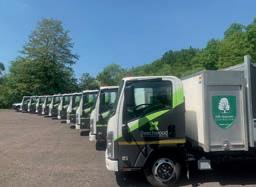
Managing director Simon Rotherham says: “I have always looked ahead when buying machinery. We started off small, but as soon as we could, we upgraded our equipment, and this allows you to compete against other firms and win bigger contracts. We look to be highly professional, which means well-trained people along with the best equipment.”
He adds Beechwood has an ambitious five-year growth plan to include a new depot in the north of England and taking on more local authority work, albeit at sustainable rates.
We started off small, but as soon as we could, we upgraded our equipment, and this allows you to compete against other firms and win bigger contracts

safely, particularly if trees are unstable.
The company looks for top of the range kit for all its work, an example being a recent tree removal and stump grinding project at a new school development in the East Midlands. Trees were removed mechanically with the wood chipped to provide biomass while the Predator 56 was used for stump grinding. “This was employed to quickly remove the tree stumps and can also be used for vegetation clearance with a flail attachment.”
Taking on bigger kit, such as a Heizohack biomass chipper, has always shown Beechwood to be a forward-looking and distinctive business. The German-made machine can effortlessly process entire tree trunks and deliver biomass graded woodchip.
He adds that, increasingly, heavy machinery means being able to complete jobs faster but also, it means working more
Beechwood has also invested in its vehicles and now has a fleet of 15 Isuzu Grafter trucks. “We need reliability, and they also show our branding when we are on the road. The Grafter is an excellent all-rounder and because we buy them new with a full warranty, then we get great service from mechanics who really understand the vehicle.”

The company also ensures its equipment earns their keep when not being used and offers a hire service, which includes excavators with attachments, skid steer loaders, stump grinders, wood chippers, including a Bandit 12XP and a Valtra T234 tractor fitted with Kesla crane and MEWPs. beechwoodtrees.co.uk
PB Forestry and Landscaping is a specialist contractor based near Rugby in Warwickshire but covers the UK. Established by managing director Phil Bett in 2011, the company has extensive experience in trees safety works, and ground clearance as well as its other landscaping activities such as planting, fencing and hydroseeding. Bett explains that PB’s speciality is to use heavy machinery to carry out high risk and larger projects, which he describes as “mechanical tree surgery”.
The company owns a Sennebogen 718E – a multi-tasking material handler with options of a grapple saw, tree shear and mulching head, giving a complete range of tree clearance, tree safety, and vegetation clearance capabilities. While it is capable of cutting at a reach height of 13m thanks to its telescopic boom, its four-wheeled operation allows it to be legally driven on roads, and it is easily transported greater distances on a low-loader as recent major works in Scotland prove.
Overall, PB Forestry and Landscaping has invested some £1m in recent years, with other kit including Bandit 20XP and Kesla C645T2 wood chippers as well as a Green Climber “robo-flail” remote control tracked unit to cut vegetation that avoids the need to use strimmers and brush cutters.
“I’ve long been a supporter of mechanisation, because of how much
can be achieved compared to typical methods, but better safety is the key, as is increasingly being seen; diseased trees are often unsafe to climb and unpredictable to fell manually,” he explains.

“As a company we’ve invested heavily to take the man away from the risk. We apply the hierarchy of controls as recommended by the HSE and professional bodies.”
I’ve long been a supporter of mechanisation, because of how much can be achieved compared to typical methods, but better safety is the key
Where possible, PB uses their specialist machinery to carry out works to reduce risk and increase productivity. Bett adds that MEWPs can provide a solution which PB does use on selected jobs, but there are still risks, whether from falling branches or uneven ground. It is often safer working using forestry equipment such as a material handling machine with a crane. However, in terms of promoting safety, he says: “Unfortunately, it’s not uncommon to find people using traditional methods where they are not appropriate.”
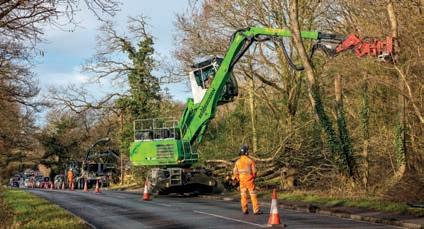
Bett comments that there can be lack of awareness about the benefits of this, including from local authorities.
“This situation does appear to be changing
as more people understand the risks involved with traditional methods. Recently, this has led to us completing significant works on the major road networks, with the Sennebogen, dismantling and handling large amounts of timber in short traffic management windows.”
When using mechanisation, it may appear that day rates are higher. But this is countered by the fact that greater productivity. “You also need less people, so it’s likely to be far more efficient, safer and better value. You also need to consider the overall job cost and time – completing works in a shorter time reduces additional costs for items such

as traffic management and ecological supervision. Being able to keep lane closure times to a minimum is very attractive to those planning works on the road network.”
Bett explains some might see investing in major forestry kit as a risk. “For me, it was the only option and is the way you win bigger contracts. There will always be a place for climbers, but it’s not a practical way of working in a growing number of cases; and with ash dieback so prevalent, this is only going to increase.”
pbforestry.com
ARBORISTS WANT SAFETY AS A CORE BENEFIT SO PRO ARB ASKED A RANGE OF LEADING PROVIDERS FOR THEIR RECOMMENDATIONS AND GUIDANCE TO ENSURE IT’S SAFETY FIRST
Tim Bendle is an H-Team ambassador and comments on the following Husqvarna products:

Top-handle battery chainsaws –T540i XP G & T542i XP G
“We know heated chainsaw handles can be a significant contributor to arborist safety. Many tree climbers don’t wear gloves when climbing and operating a chainsaw, which means they are subjecting themselves to increased vibration levels compared to when wearing protective gloves. The closer position of the handles on a top handle saw will also put more strain on the hands, wrists, and arms. These models with heated handles improve the feeling and comfort in the user's hands during operation, especially in cold and wet conditions, as well as improving the reduction of potential vibration.”
Power Ascender
“This is designed with the arborist in mind, offering the user significant efficiency and fatigue benefits and also improved safety. The ascent into the tree is the most time-
This is designed with the arborist in mind, offering the user significant efficiency and fatigue benefits and also improved safety
consuming and physically demanding aspect of the climb and the ascender removes the physicality and gives the climber an efficient ascent. It also gives the ability for the grounds person to access the tree at speed should an aerial rescue be

required. With the additional remote operation, the grounds staff can also send equipment up and down the tree effortlessly.”

Hearing Protection X-Com Active
“In recent years, hearing protection with integrated communication has become widely used among arborists. X-Com Active offers a host of benefits to improve the safety, efficiency, and enjoyment of the whole team. Protecting the user from loud noises, you can still hear ambient sound, while the full duplex intercom system enables up to 10 people to be in full communication with each other when up in the trees.
Arborist Helmet Spire Vent X
“Finding a comfortable arborist chainsaw helmet isn’t always easy and many can be cumbersome and uncomfortable to wear. The helmet is lightweight and close-fitting, offering comfort and ventilation which vastly helps reduce the heat exhaustion commonly experienced by climbers on warm days. A range of visors can also be fitted to suit all.” husqvarna.com
Forest and Arb – fill your boots
The ArbPro Andrew EVO Safety Chainsaw Boots are specifically designed for arborists. Martin Collins, sales, e-commerce and digital marketing lead, comments: “The Arbpro EVO chainsaw boots are designed to be your trusted companions in the treetops. Built with premium waterproof ArbTex membrane, these boots offer rugged durability and water resistance to withstand the elements, within a slimline, lightweight design. They also have an anti-perforation mid-sole.
“For added support during the day, lean back onto your heels when lacing to tighten your heel into the base of the boot, for secure fitting all day when climbing or working on the ground.” forestandarb.com


Stihl – listen up with Advance ProCOM
The Advance ProCOM uses Bluetooth mesh technology and links up to 16 headsets automatically. It allows users to listen and communicate effectively as a team and is available as a headset or an accessory for the Advance X-CLIMB helmet –it can also be fitted to other 3M compatible helmets.
According to product executive Reuben Wilson Advance ProCOM offers arborists high-quality communication in noisy environments while providing a high level of hearing protection, with an impressive attenuation value of 31 for the helmet set and 32 for the headset.
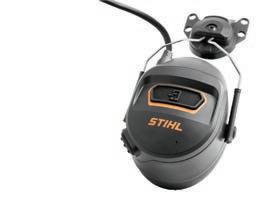
“Further supporting safety on-site, ProCOM’s intelligent ambient mode allows the user to clearly hear their surroundings and react quickly to potential dangers such as traffic or passers-by.”
Ambient mode de-activates automatically when a loud noise is detected, maintaining a high level of protection when it is most needed. It has a range of up to 600m depending on the terrain; however, each headset acts as an amplifier to extend the range even further if more than two headsets are in use. Multiple channels are available for teams working in close proximity, and users may choose the open mic setting for frequent communication, or alternatively, the push-to-talk button can be used instead to minimise background noise. stihl.co.uk
GreenMech – safety built-in
Peter Bagguley, GreenMech’s national sales manager, says when it comes to wood chipper safety, there are a number of safety devices fitted to modern machines that are in-built to protect the operator. Bagguley advises arborists to ensure they make checks at the start of each working day. “Check these devices are working correctly and that they are as the manufacturer intended. Do not disconnect the red safety or control bar or do anything to prevent it from working. It is also imperative to regularly test the ‘mushroom’ stop buttons, check all bonnet sensors and maintain regular blade inspections.” Shown is the EVO 205TT, which combines powerful chipping performance with a 360° turntable for versatility. It is the latest launch in the EVO series, which already offers 6” and 8” variants in tracked and road-tow configurations. greenmech.co.uk

Caroline Woodward, director of marketing and communications for CMC Lift, says: “Using a MEWP increases productivity and profit, but selecting the right one is paramount for keeping you and your team safe. When looking for the right MEWP, you need to take account of factors like terrain, height, and task.“Our advice is to focus on the basics. First, ensure it has sufficient levelling capabilities and can level on rough terrain. Therefore, considering the outrigger type is fundamental – as a general rule of thumb, straight outriggers are for more even ground, semi-articulated for a range of uneven surfaces, and fully articulated can level on rough or extreme terrain.
“In tree work, you access branches from the side, meaning you rarely achieve full height from your MEWP. So, the second is the outreach at full-cage capacity. The reasons for this are twofold. Firstly, you can get two people, with all their equipment in the cage at the highest, furthest point. Secondly, it creates a large drop zone, keeping your staff and machine safe from falling debris.” The CMC S23 is shown with its industry leading outreach, and it provides the ability to create a large and safe drop zone. cmclift.co.uk
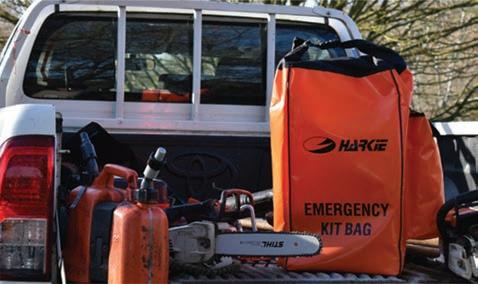
The Harkie Emergency Kit Bag is becoming standard issue for a growing number of arborists and keeping one in a vehicle is an effective way of managing risk and dealing with a serious incident.
The bag provides the solution to keeping essential equipment together, clearly identified, and easily accessible in the event of an incident. The kit comprises a generously sized, heavy-duty bag equipped with a 20L spill kit, a 2kg ABC fire extinguisher and a 10-man squad first aid kit. The bag is large enough to allow extra items, tailored to specific emergency needs. It provides peace of mind and significantly reduces the risk if there is an unanticipated crisis.
The bag is durable, constructed from hard-wearing vinyl, and features a roll-top closure, secured with a clip and a large side pocket for storing the fire extinguisher. It features adjustable shoulder straps, allowing the bag to be easily transported to the work site. landmarktrading.com

Marlow manufactures a high visibility reflective safety line – the 12mm low stretch kernmantle rope (LSK) is constructed with reflective yarn markers that offer greater visibility and additional safety by illuminating the rope. The rope was originally designed for industrial use, rope access, caving and abseiling when working in confined spaces or low visibility is a factor. However, it also has appeal for arborists and the reflective element of the rope can be illuminated by a light source such as a head torch. It is manufactured in the UK with a Nylon multiple twisted core and 16 plait braided Nylon cover, being EN1891 Type A certified. The rope all offers improved abrasion resistance, is easily handled and works well with various climbing devices and hardware – it is available in 25m, 35m and 45m with a sewn eye termination on one end. marlowropes.com


Many arborists will develop a preference for their favourite brands over the years, but for those new to the sector, it can be hard to decide on which will suit their needs. I’ve met many customers when they’ve just completed a basic chainsaw course and are ready to start work. There are jobs that will provide PPE, but if you are planning to work as a subcontractor, you’ll need to buy your own. It’s always going to be a considerable outlay and there’s no getting around that. Of course it’s hard; you may have spend several thousands of pounds on the training and then need to spend around £1,000 on PPE. That said, if you can possibly go for quality, it will save you money in the longer term.
What do you need?
PRO ARB IS DELIGHTED TO ANNOUNCE ALUN JAMES WILL HAVE A REGULAR SLOT IN EACH ISSUE – BEING A UNIQUE COMBINATION OF QUALIFIED TREE SURGEON, MECHANIC AND RETAILER, HE’S WELL PLACED TO PROVIDE EXPERT ADVICE. HERE, HE ADVISES ON BUYING PPE WHEN STARTING OUT
first

It can be difficult starting a new job but be sure to speak to the team leader or manager about what you need. They should be aware of health and safety regulations and if there are particular requirements – so working trackside might


mean a specific colour helmet is necessary, for example. Some tree workers may be getting away with wearing PPE in poor condition or with borrowing items, but it’s a bad habit to get into. Keep your PPE safe, don’t lend it out and look after it – and it should look after you.
Buying cheap fashion clothing online is commonplace, but when it is what you wear to work, my advice is don’t gamble. Just because you consider yourself a standard ‘medium’ or always take a size 8 in trainers, this will not always translate to buying PPE. There is variation in the brands, and some come up smaller than standard sizing, whereas others are larger. Of course, you may well not be local to where I’m based in Wales, but I sell to many customers based on a phone conversation. So, if you want to talk to me about suitable chainsaw trousers then I can give you advice. Make sure you have a tape measure handy as you’ll need to provide me with an inside leg measurement and waist measurement. I can then recommend trousers that will be a perfect fit. As more women enter the arb sector, I can also advise on sizing – there is less choice, but it’s better than it used to be.
Cheap chainsaw boots tend to be heavy and have a short working life. You may also find they become very uncomfortable if you’re wearing them all day. Quality ones are lightweight and can make an enormous difference to your comfort – again, if you’re spending around £300, for example, trying on your first pair is recommended.
First aid kits – don’t think you won’t need it
A large one may be taken out on a job, but a growing number of arborists also have their own personal trauma kits. You can pick up a basic one for around £15, but this literally won’t be much more than a sticking plaster and eye wash. But accidents are not uncommon, and a good quality first-aid kit comes from MediArb – it is developed by and for arborists. An individual one can cost around £100 but could literally be lifesaving.

About Alun James
Alun’s retail outlet, Arb Supplies, is in Johnstown, Carmarthenshire and he also runs a repair service – Cutting Edge Mechanics. arb-supplies.co.uk facebook.com/CuttingEdgeMechanics Tel 07841 871572






Sidekick – Lanyard Manager Prevents lanyard tangles, allowing the climber to work more efficiently in the canopy while keeping the work positioning lanyard snag-free. • Intuitive one-handed operation without looking
• Automatically adjusts to most lanyard diameters
• Feed the rope through the friction nodes – one movement creates three loops
• Multiple attachment orientations

• Use both ends of your lanyard
• Easy to set up with a wide variety of lanyard configurations.

2-N-1
A comfortable, low-profile and versatile harness purpose built for SRT. Made from lightweight and durable nylon webbing, the Chester is more comfortable and an upgrade from using a makeshift rope and carabiner to help tend the SRT ascent. Designed by original 4SRT inventor, Mike Storey.
• Improved daisy-chain webbing
• Staggered clip-in loops
• Lightweight and low-profile.
Lanyard A simple and durable saw strap – tether the chainsaw short for storage and quick access, or long, for security while in use. An update to the existing lanyard with improved stitching, higher quality webbing and a colour revamp. The large snap is easy to handle with gloves on.
• 49.5” fixed-length Nylon webbing construction
• 10” Eye for girth hitching
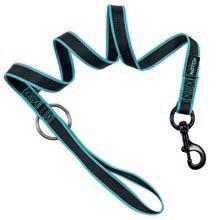
• Metal snap termination on one end • 2” stainless steel ring allows extended stow on climber harness • Length: 138cm / 54.5”.

Friction Saver with Aluminium Wear Rings
Featuring patented lightweight aluminium wear safe. Protect the climbing line and the tree. These friction savers stand out due to the patented rings. These have the industry's first wear indicator mark for increased safety and ease of inspection –three different lengths: 24”, 36” and 48”.
• Multi-layered, fray resistant custom nylon webbing
• Resists twisting

• Rings are individually serialised, made from 7075 aluminium • CE Certified.
Micro Pully Suited to tending a friction hitch or providing a smooth redirect. The low profile and lightweight design makes it easy to carry in the tree and cuts down on the bulk in climbing systems. The swinging side plates make it midline attachable and easy to use.
• Free swinging side-plates • Compatible with ropes up to 12.9 mm diameter • Scannable data matrix for track and trace capability
• Made with aluminium alloy and stainless steel • CE Certified.
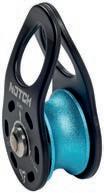


Beta Rope Gloves Leather palm-gloves crafted to handle ropes smoothly and comfortably with less bulk. Best-in-class dexterity in a rope handling glove. Touch screen compatible thumb is unique to Sterling. Meets CE EN 388 for abrasion, blade cut resistance, tear resistance and puncture resistance.
• Goat leather construction
• Available in two colours, black and black/natural
• Pre-curved fingers for excellent dexterity
• CE EN 388.
Wild Bull Rope Made of 100% polyester, with ½” double-braid rigging rope that will always be visible in the tree. High strength and great abrasion resistance while remaining easy to handle.
• Double-braid construction
• Easy to splice

• Durable and snag-resistant polyester construction
• Solution dyed fade resistant yarns.


Big Ups 12.7mm Arbor
Climbing Rope A braided nylon core over a 24-strand braided polyester sheath. Firm yet flexible feel along with the smooth 24 strand sheath, makes it a great option for moving and stationary rope systems in mechanical and cordage based set-ups. Two vivid colour options.
• Spliced and non-spliced terminations • CE Certified to EN 1891 Type A • CE Spliced eye available
• 24-strand double-braid construction.
Safe D Carabiner Fully certified climbing rope featuring a braided nylon core over a 24-strand braided polyester sheath. Made from lightweight aluminium with a removable captive eye pin, allowing a rope with a sewn eye to be attached securely.
• Data matrix for Scannable compatibility • Certified to EN 362 and NFPA 2500 • Allen key included
• Replacement parts for pin and screw are available
• Available in Twistlock and Autolock.

EGO POWER PLUS HAS LAUNCHED A TRAILBLAZING NEW CHARGING SYSTEM TO SUPPORT ARBORICULTURE AND GROUNDSCARE PROFESSIONALS

• EGO's PGX professional charging system is a flexible solution that scales to meet the specific needs of any business. The system is powered by the PGX1600E-H 1600W charging hub, which runs off any standard electrical outlet, meaning no electrical infrastructure upgrade is required.
A portable power bank
• When disconnected from the PGX Hub, the PGX1400PB is a portable power bank that allows users to transport their energy to the jobsite, and recharge their portable batteries, as needed.
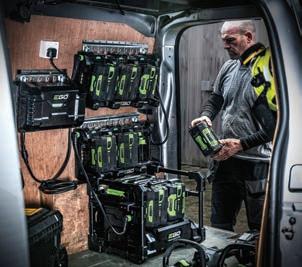
In vehicle use
PGX professional charging system


safety
• The 1600W Hub and PGX3000D 3-Port Docks
securely mount to the wall via steel-reinforced screw through-holes and are both E-Trackcompatible via the PGX Commercial Charging E-Track Mounting Kit (available separately) unlocking the potential for in-vehicle charging for all EGO batteries, via a single power connection.
• Lockable battery ports provide peace of mind that the platform remains safe on the jobsite while integrated connectivity allows users to monitor and control when they charge and provides peace of mind that power will be available when it is needed.
A modular system
GX allows for each user to adapt it to their specific power needs. The PGX1600H Hub connects to any combination of up to 30 PGX3000D 3-Port Docks, or PGX1400PB power banks (available separately), to provide charging power to 90 battery ports. The system manages charging intelligently, meaning all batteries can be charged without the need for manual intervention. It can effectively charge up to 70 EGO 56V ARC Lithium batteries, or up to 250Ah of battery capacity overnight (in 12hrs).



Outwear is an expanding specialist importer and distributor that takes an uncompromising approach to selecting the best in PPE.
The company is based in Lockerbie, South West Scotland and is led by Andrew Hunter, who’s been managing director since its formation. Hunter studied law at Edinburgh University and then trained as a chartered accountant at KPMG. After this he ran a training and recruitment business, where he provided services for one of the area’s major employers Clark Engineering, which supplies forestry equipment.
This is led by Douglas and Yvonne Clark, who also have a number of enterprises, and back in 2016, they were planning on setting up a PPE supplier. They discussed this with Hunter since they felt he would be an ideal
We have a clear focus, which is to supply international elite brands, and we work with manufacturers that are family owned and which operate with integrity and passion
leader. It proved a winning formula and as a result, the three became owners of Outwear.
Outwear specialises in PPE for the outdoor professional, in particular arborists and forestry workers, but also

those working for utility companies, the police and military as well as those who go hunting.
Hunter comments: “It has been great to be in at the start and build the strategy. We have a clear focus, which is to supply international elite brands, and we work with manufacturers that are family owned and which operate with integrity and passion.”
Top brands from Europe
Outwear’s key brands for arborists include Crispi from Italy and Pfanner and Protos
from Austria. Pfanner and Protos are in the same ownership and Pfanner was launched in 1990 by Anton Pfanner and offers a wide range of PPE clothing, in particular their renowned chainsaw trousers, but also jackets, gloves and boots.
The focus is on safety and a proprietary StretchFlex® fabric is used to also ensure comfort – a range of colours are on offer along with the Arborist Type C trousers now being available in a newly launched hi-vis orange.
Protos is a specialist provider of helmets, and these have developed a first-rate reputation –
their development took around 12 years and they offer ear, facial and neck protection, as well as providing a chinstrap and rear ventilation between the inner and outer shells. The Integral BT-Com is also becoming
because we are reaching a professional market, many arborists do choose our brands, compared to mid-range products, and the value is often better
increasingly popular – this was the first four user Bluetooth communication system and is proving effective at boosting safety while working outdoors.

Outwear also supplies the CRISPI® footwear brand. "The Forst GTX boots are premium arborist footwear, that are supremely light and comfortable and made with innovative materials,” comments Hunter.
He regularly visits Pfanner and Protos in Austria, which Hunter says is an enjoyable part of his role, and believes it is imperative that Outwear shares its manufacturers’ values.
“Working closely matters. We are selling top quality products that are almost entirely made within Europe – these are going to cost more, and we want to be able to let our retailers know what the manufacturing process is and who the people are behind it. We don’t sell directly, but in addition to distribution, we help promote the brands, whether at trade shows or via social media.
Fortunately, because we are reaching a professional market, many arborists do choose our brands, compared to midrange products, and the value is often better as this is PPE that allows them to work more productively and should last longer.”
He adds that Outwear was well prepared for the impact of Brexit and although there is a need for more administration, this is being well managed and only a small extra cost has been incurred.
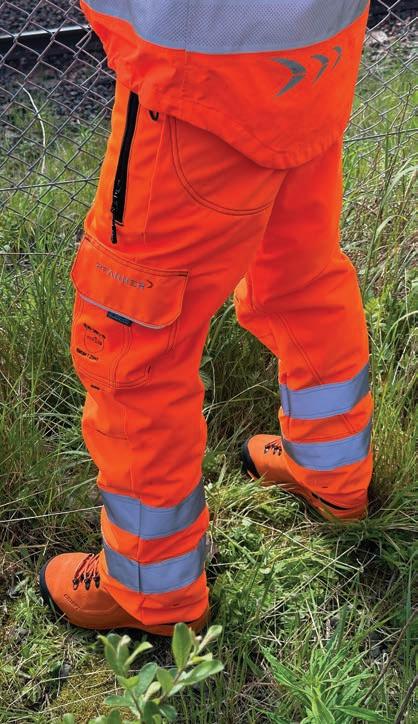
Outwear also attends events such as the APF and the ARB Show, which he says is always hard work but good fun.
“We’re there to promote the brands and to talk directly to arborists. We always find their feedback incredibly valuable.”

Hunter notes that recent years have seen the arrival of more ‘fashion’ patterns and colours, which can look great on Instagram, but ultimately, quality continues to win out. Outwear is committed to its retailers – the number
of these have trebled since the company was set up and now number around 100 across all sectors. Hunter explains: “We work with a number that’s probably about right. We’ve been careful not to have retailers that are too close to each other and so in competing sites. We may just take a few more on that are in areas where there is under representation, such as Northern Ireland.”
There will be new brands joining the Outwear stable in the future, but Hunter says selection is a long process. “You should only back one horse in a race, so we don’t want to offer competing products. We get approached by brands regularly, but they often are not right for us. We will bring on more, but only where we can ensure that sales targets will be met and that means finding those that are exceptional.”
Arborists working with petrol powered equipment should be aware of legal requirements and regulations aimed at protecting against potential risks. Laws include the Dangerous Substances and Explosive Atmospheres Regulations 2002 (DSEAR), which applies to the safe storage of fuel. DSEAR sets the minimum requirements for the protection of workers from fire and explosion risks related to dangerous substances and requires employers to control risks. Meanwhile, the Control of Substances Hazardous to Health Regulations 2002 (COSHH) relates to protecting employees from harmful exhaust emissions. It recommends thoroughly assessing risks to workers’ health to identify the precautions needed. One particular topic the COSHH guidelines identify is around benzene exposure.
This is just one of the many hydrocarbons found in conventional pump petrol. Human exposure to benzene has been associated with a range of adverse health effects, including cancer. The COSHH regulations advise against benzene exposure completely, but where this cannot reasonably be done, steps should be taken to control exposure, certainly below the workplace exposure limit (WEL) assigned for benzene of part per million (ppm) of air averaged over an eighthour period. Benzene exposure can be avoided with aspen alkylate petrol, which differs from traditional pump fuel. Alkylate petrol is made of gaseous hydrocarbons found in fossil fuels. These are a kind of vapour or gas that occurs when refining oil. This process is called alkylation and involves combining excess gases from the distillation of crude oil and from the cracking plant, resulting in a liquid alkylate.

Once additional components are mixed in, the result is fuel which is significantly purer than traditional petrol, with content of harmful aromatic hydrocarbons such as benzene and polyaromatics close to zero. Switching to Aspen Fuel can reduce benzene emissions by up to 108 times. Aspen alkylate petrol is virtually free from sulphur, benzene and other harmful substances. It is also ethanol-free, which improves the reliability of engine performance and preserves the life of components which can be susceptible to failure when running on conventional pump fuel.
Aspen 2 is alkylate petrol pre-mixed with a premium quality biodegradable 2-stroke oil, eliminating the hazards and potential damage associated with mixing.
Because petrol is considered a ‘dangerous substance’ by the Health and Safety Executive, a company must ensure safe transportation
and storage of fuel. While there is not a limit legally on how much petrol can be stored by a commercial user, the amount kept on workplace premises should be ‘reasonable’ and not exceed expected usage. An accurate risk assessment should be conducted and there are many factors to consider, differing for each premises – guidance around best practice can be found on the HSE website, insurers and fire authorities.
A number of options are available for petrol storage – from large cabinets suitable for fuel drums, to containers or boxes for smaller quantities. All should be labelled and where practical, stored in the open and at ground level.
Aspen offers the Transbank fuel storage box – custom designed by Armorgard Security Products – for the convenient, safe storage of 54 5L cans of Aspen. It is coated in a durable red epoxy coating and ventilated to prevent the build-up of fumes. Double padlocked for security, it meets current legislation for storage of hazardous goods. The Fillpartner Autofiller attachment is designed for the 5L Aspen cans, to make the refuelling of machines safer and easier. This protects users and the

surrounding environment from unnecessary contact. The seal ensures there is no release of fuel vapours and when the tank is full, it automatically stops refuelling.





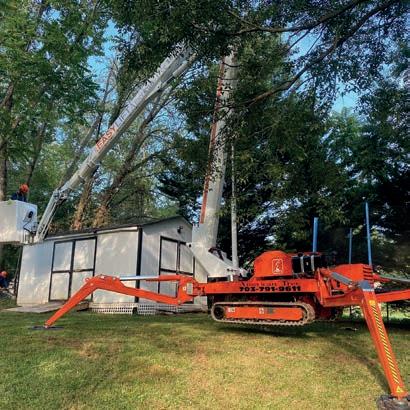


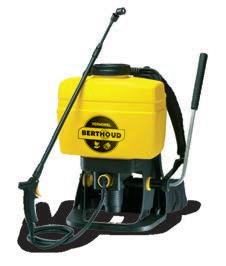

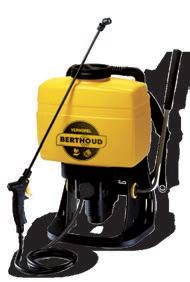



Use the 2 or 4-stroke fuel risk-free in your working environment and if you don’t ‘Experience the Difference’ simply return the unused fuel for a refund of the cost difference. Visit our website for more details.


In recent years, the day-today tools of arborists have changed significantly due to technological shifts, that not only support productivity, but sustainability too. The switch to batterypowered tools is one of the most transformative.
Not only can this benefit the environment, operational costs can also be driven down. However, there may be some concern among arborists who are used to the high performance of petrol-powered machines as to whether battery tools can match up. Battery-powered tools can offer as much power and productivity as their petrol counterparts, and now is the right time to consider a mixed fleet of machinery.
What can battery-powered tools offer?
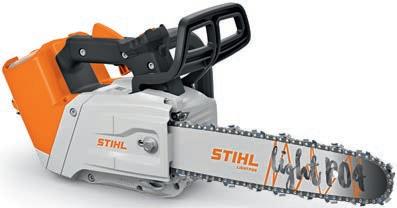
MANY ARE NOW TRANSITIONING TO NEW TECHNOLOGY FOR A GREENER WAY OF WORKING, WITHOUT COMPROMISING ON PERFORMANCE, AS REUBEN WILSON , STIHL’S PRODUCT EXECUTIVE , REPORTS
Years of development in technology means arborists can look to batteries to offer a genuine alternative to petrol. It is essential high-quality batteries are chosen to ensure elite levels of performance. Therefore, professional grade lithium-ion batteries are a must when making the switch. We recommend the batteries in Stihl’s AP System. One of the key features in Stihl's AP offering is bi-directional communication, which allows tools to draw the precise level of power from the device in use. AP batteries also have a smart constant power output feature that compensates for changes in voltage, meaning the machine will experience no loss in power as it begins to discharge.

Modern batteries with connectivity integration, such as Stihl Connected, offer further benefits by enabling users to monitor battery charge cycles, energy consumption and all-round battery health. It is also applicable to other tools too, providing a comprehensive fleet management solution. The tools are designed so that the battery fits inside the machine for balance, handling and protection. A further aspect to look out for is an IPX4 certified product. With weather becoming increasingly unpredictable, an IPX4 battery can be used in wet weather and cold temperatures, reducing downtime on-site.
Starting the journey
Stihl’s most powerful battery top-handled chainsaw, the MSA 220 T, and the rear handled MSA 220 C-B, are suitable for arborists in the tree or as a chipper saw, respectively. They offer comparable performance to the petrol-powered MS 201 models and the MSA 220 guarantees the same power output, but with the added benefit of reduced running costs, noise and maintenance requirements and emissions.
Additionally, the lightweight MSA 161 T is a good alternative to the petrol MS 151 T for smaller thinning tasks. Being quiet, they also improve communication between teams.
For felling and processing large trees, the rear-handled MSA 300, available with an 18” guide bar, offers greater power compared with the MSA 220 C-B. The recommended battery for the MSA 300 is the AP 500 S, which has a lifespan of 2,400 charge cycles. The AP system offers a full range of tools.

Be clear on charging
Charging management should be considered in advance. The number of batteries operators need depends on their access to power, the number of users and the nature of the work.
A trial period with a smaller number of machines is ideal to establish these requirements. The AL 301-4 multi-charger is suitable for overnight charging, while the PS 3000 portable power bank allows batteries to be recharged quickly. Thanks to battery technology improvements, now could be the perfect time to switch to high quality battery-operated tools. stihl.co.uk
This rear-handle chainsaw –the CSX5000 – is part of EGO’s new Pro X range. It features a chain speed of 30m/s, power equivialent to a 66cc petrol saw and is well balanced.
An innovative LED display screen allows the user to monitor the load on the motor and remaining battery capacity, while also allowing the adjustment of chain speed and oil flow rate.
The CSX5000 is supported by EGO’s next-generation PGX battery charging solution. The PGX1400PB power bank, with off-grid charging, enables arborists to easily carry enough energy to see them right

efficient cutting, this all-round saw has the power and performance to support arborists and tree surgeons with the toughest of jobs.
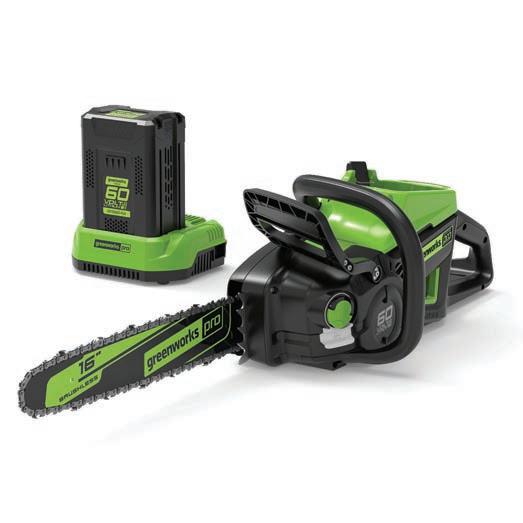
“The Pro X range represents a step change in how arborists complete their work. We have listened to our customers and the result is a range of robust tools that delivers on performance and functionality, complemented by our battery technology and charging capability to ensure reliable power for a full day’s work of felling and clearing.
“From the range, the CSX5000 chainsaw is a particular highlight for arborists, providing comparable performance to established petrol saws but bringing all the benefits of battery power.” egopowerplus.co.uk
Milwaukee’s FTHCHS top-handle chainsaws, available in 12” and 14” models, redefines what a battery-powered saw can achieve, according to Martin Collins, sales, e-commerce and digital marketing lead for Forest and Arb. “This lightweight powerhouse tackles tough jobs with ease, thanks to the M18 FUEL technology. It delivers cutting performance that rivals petrol-powered chainsaws, without the fumes or hassle.”
This chainsaw from Greenworks has safety at the core of its design including a two button start procedure to avoid accident start-ups and a full chain brake system that instantly stops the chain when engaged. This 60V 40cm chainsaw features a 40cm cutter bar and 3/8” chain and is suited to logging, cutting, or pruning tasks. It is powered by an advanced lithium-ion battery, offering high performance and long run times, without the emissions, vibration, or noise associated with petrol chainsaws.
The 60V batteries from Greenworks can be interchanged to extend run time. Other products in the range include lawnmowers, leaf blowers, hedge trimmers and brush cutters. It can be ordered direct from Greenworks with free delivery within the UK and a 30-day return guarantee. greenworkstools.co.uk
The compact, top-handle design offers high levels of maneuverability, making it suited to limbing, pruning, and tight spaces. The M18 battery system provides extended runtime and eliminates the need for constant refilling. It is also compatible with over 200 other M18 tools, making it a versatile addition




Are you considering becoming an arboricultural consultant? This is an interesting and important role, where advice and recommendations are provided to tree owners and managers. It’s necessary to be skilled at writing technical reports on subjects ranging from comments on a tree’s public amenity value to health and safety issues that may relate to legal, insurance and planning matters.
What qualifications?
The route into arboricultural consultancy can be varied, but the starting point is a Level 3 in Arboriculture. If you don’t have a Level 3, but have plenty of industry knowledge, then you may be able to choose to move straight to the Level 4 with an online provider – more information is available online via Google searches or the well respected arb training firm, Tree Life (treelife.co.uk). If you already have a Level 3 or above, the next thing to think about is your experience. Probably, you have been doing some tree surveying in your current role, which is a good starting point, but consultancy
firms will also be looking for a broader set of skills than surveying alone. So, what else can you do to make your CV of more interest?
Evidence experience
Consultancy firms looking to recruit always ask us to find arborists who have working experience and a good understanding of BS5837 (trees in relation to design, demolition and construction). We can’t stress how often this comes up or how important it seems to be, so do evidence this if you can. If you can’t, then there are short courses available, typically taking a day, which will get you started.
Experience of or a working knowledge of CAD (computer aided design) is another desirable skill that, in combination with experience and confidence in using handheld GIS mapping devices, will go a long way to support your application.
Again, there are short courses available for CAD, although these tend not to be arb specific and may involve a course of lessons at your local college – or you could try out some free trial programmes on the web.
Experience in using industry specific tree management software and survey equipment can be gained while on an arb course, as students can sign up for a free shortterm subscription to get to use recognised industry software such as OTISS and Pear Technology for the duration of the course.
Prepare a sharp CV
Consultants need to be good communicators who are comfortable with computers and the written word, so make sure your CV is well presented as any errors here will raise a red flag for attention to detail. Your CV should evidence your CPD (continuing professional development), so keep a track of any courses, seminars, conferences and workshops that you have attended and include these details.
Becoming a member of a professional organisation is also a good idea, as this will keep you up to date with industry developments, training events and sometimes employment opportunities, as well as enable connections and illustrate your professional interest.
Finally, consider doing some industry shadowing with an experienced arb consultant and cite this on your CV too; this will give you some insight into the role, illustrate how serious you are about progressing and might even land you a paid job.
We are always pleased to take applications from anyone who is looking in this direction for the next step in their arb career, so please do get in touch and we will add your details to the register to hear about consultancy roles. Contact us at admin@ctcrecruitment.co.uk or call for an informal chat on 01743 344466

This year’s Pro Landscaper Business Awards saw The Environment Partnership (TEP) win the Arboriculture Company of the Year. TEP is headquartered in Warrington and operates across the UK with offices in London, Leicestershire, Cornwall and Tyne and Wear.
The company launched in 1997 with three founders – an ecologist/arborist, a landscape architect and an environmental planner. Today there are 14 arborists, from graduate to director level, who are at the core of the company’s regenerative approach to habitats, biodiversity, soils, water and wellbeing.
The arb division is headed by Jonathan Smith, who explains the whole company was thrilled to hear about the team’s success.
“This was our first entry, and other entrants were largely practical contractors. When we saw the shortlisting, we knew we were in the minority. It became a running joke that we probably had the softest hands in the room!”

In the spotlight
He adds: “It’s hugely rewarding to gain direct recognition for the great work our arboriculturists do. Despite TEP having won numerous awards over the years, arboriculture is rarely the star of the show, so this was the first opportunity I’d had to attend an awards ceremony and bring back something that the whole team can be proud of.”
There was also recognition by the judges of the great team spirit among TEP’s arb team.
“This has been a crucial factor in the attraction and integration of new staff, but also in retaining good people.”

Smith has a degree in arboriculture and has been with TEP for 18 years. Like many in arb, he has an innate love of nature and the outdoors.
“For me, this passion turned into a career opportunity when I worked alongside
a tree surgeon while on a work placement at school.
This highlights a need to raise the profile and awareness of tree based jobs, especially with young people. It’s all about knowing what’s out there, so that genuine passion can be paired with social, environmental and business needs.”
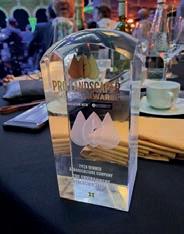
He worked briefly as a tree surgeon in West Yorkshire after graduating and then landed a job at TEP as a tree surveyor in 2006.
It’s hugely rewarding to gain direct recognition for the great work our arboriculturists do
By 2013, he was principal consultant and undertaking team management responsibilities, assuming the associate director role for arboriculture in 2018. He is also a Chartered member of the Institute of Chartered Foresters.
The team works across a diverse portfolio, from domestic tree inspections to major infrastructure projects and expert witness services. It covers tree and population management, development related work and production of tree policy and strategy documents. Smith comments: “We have several large and long-standing contracts that see us inspecting trees across the length and breadth of the country. In the last five years, our team has worked on over 800 development sites, mapping over 50,000 tree groups and hedgerows.”
The company has held ‘Investor in People’ Gold status since 2011 and focuses heavily on training and development, including in arboriculture, business skills and health and safety. There are regular reviews and in 2023, the TEP Early Career Academy launched to teach core skills and knowledge required throughout an environmental career. The CSR team promotes TEP’s volunteering policy too, focusing on charities and causes connected with community, health, education and the environment.
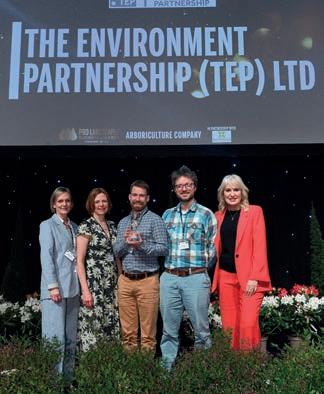
Technology is also a focus – in 2019, TEP arborists worked in partnership with US software developer PlanIT Geo to develop a new digital survey tool, the Tree Plotter, for BS5837 Tree Surveys. Software module is the most advanced tree survey tool currently in use in the UK and gives users a powerful means of efficiently and consistently completing tree surveys for development.
TEP also identified an opportunity to use a similar approach to tree risk management with Tree Plotter Risk. The software system is exclusive to TEP and embeds its own risk assessment and management methodology. Being cloud-based, it can be accessed in realtime by surveyors, managers, and clients. “We are also exploring the use of drones to assist in our survey work, especially at a population level and their potential for 3D modelling,” says Smith.
Making sure children currently in the education system know that ‘green jobs’ exist is vitaL
The Environmental Responsibility Team also reviews TEP’s carbon footprint, reports on significant changes to emissions and raises awareness of offsetting schemes. TEP is carbon neutral and is currently developing a road-map to net-zero with the help of external specialists. Smith adds: “We ask suppliers to commit to the use of products which are sustainably sourced and use recycled materials, where appropriate. Timber products must be certified under the FSC or the Programme for the Endorsement of Forest Certification Schemes.” Further, TEP also made a decision several years ago not to work on projects that involve new extraction of fossil fuels.
Smith says as the arb team grows, TEP will continue to advocate for arboriculture as a profession “and in supporting people to develop as reflective practitioners, but finding candidates with the appropriate training and experience has become more difficult.” TEP’s workload is expanding, but careers with trees are generally not promoted at schools. He says: “Awareness is the key. There’s never been a better time to be involved in arboriculture because everyone from homeowners to government leaders are going to need us over the coming decades. Making sure children currently in the education system know that ‘green jobs’ exist is vital.”
Meanwhile there are shortages of senior
professionals, and Smith says: “The consulting arborist is a difficult post to fill unless candidates have the requisite academic training and ability to make sound professional judgements.”
TEP’s staff are therefore qualified to Level 5 on the Qualifications Framework (HND/FdSc) and many are independently accredited by Lantra in professional tree inspection.
However, TEP has a good relationship with Myerscough College as a recruitment pipeline.
“For over 10 years we have hosted an annual practice visit for students so they can see how private consultancy works.” TEP also welcomes people with complementary skills to join the team.

He points out that the workload continues to grow. “Prolonged austerity has taken its toll on local authorities, which in combination with more stringent planning law on trees in the form of biodiversity net gain (BNG), and an increased focus on council-owned tree populations in response to declarations of climate emergency, leads to some arboricultural duties being outsourced to the private market.”
BNG relates to developers and means habitats for wildlife should be left in a measurably better state than they were before the development – it is mandatory in England. Developers must deliver a BNG of 10%. “It also means arboriculturists need to work closer than ever with ecologists, landscape designers and managers to bring together the different strands of the BNG in the most effective way.”
There will be continued growth at TEP and focus is currently on the Midlands with a former employee being re-appointed as a principal consultant to lead the charge.
Its recent Pro Landscaper Business Awards victory may also help drive more business TEP’s way. But certainly, based on past experience, this is a win that is well deserved, and it is inspiring to see the breadth of skill within TEP being well and truly recognised.
After nearly 11 years with Tony Benger Landscaping, George Trott has set up his own business and it is proving an exciting journey. Trott had steadily climbed the career ladder at Devon-based Tony Benger Landscaping, rising to become head of arboriculture for the division, but was also increasingly feeling he wanted to take a new direction – and so his plan to launch G.Trott Tree Consultancy was hatched.
“I’ve got a passion for arboriculture and have gained so much experience with Tony Benger, but it also felt like the right time to set up a business. I wanted to be able to make my own decisions and work more flexibly, although I expect I’ll be working harder than ever.”
Trott says wanting to plough his own furrow began when he was at school. “I was encouraged to do A levels and progress to university, but it wasn’t right for me. I could do the studying, but I knew I wanted an outdoor job, though I didn’t know about careers in arb.” He worked in grounds management after leaving school and it was through this that he learned about tree care. “I realised this is what I wanted to do, but also in recent years, I wanted to be able to build my own client base.”
Trott adds he now has the track record and qualifications needed to work independently. He continued studying while working full time and has achieved Level 6 – equivalent to an honours degree – which he studied for over three years while working full time at Tony Benger.
He achieved this with training provider Tree Life and his dissertation focused on tree planting and the current British Standard, which was created in 2014. “I looked at whether it is fit for purpose, given that knowledge has moved

I’ve got a passion for arboriculture and have gained so much experience with Tony Benger, but it also felt like the right time to set up a business
on in terms of best practice, tree health and climate issues and it would be fantastic if some of my work could influence a replacement standard.”
He’s also already achieved recognition in terms of being one of Pro Landscaper’s 30 under 30: The Next Generation winners in addition to a David Bellamy Conservation award as well as one from BALI for Nature Conservation and Biodiversity Enhancement.
THE FORMER HEAD OF ARBORICULTURE FOR TONY BENGER
HAS RECENTLY SET UP HIS OWN CONSULTANCY AND IS ENJOYING EVERY MOMENT OF STARTING THE
G.Trott Tree Consultancy will offer a full range of services to clients, including surveys for homeowners and businesses and deal with issues such as TPOs, subsidence, safety, new development and woodland management.
He will work from home in Wilmington, Devon, where he already has an office. He has also purchased personalised company workwear and is currently building his own website. “I know a graphic designer who did the logo, but I also want to do a lot of the work myself.”
He adds that a feature of the website will be an online knowledge centre. “There is a lot of interest in trees, but also a lot of misinformation. I want to provide short courses and factsheets on trees and matters that affect them – such as environmental, health and legal.” Trott has been working on these for a number of years and says, “I’m looking forward to seeing these on my website as a way of differentiating what I offer.”
He has no plans to take on employees at present but will work with other professionals on larger projects. He also won’t be going down the traditional tree surgery route. “I’ll be focusing on consultancy. Where tree surgery is needed, I’ll recommend trusted local firms I have a relationship with and hopefully, they will also suggest me to their clients that are looking for technical guidance.”
And one client will be his former employer, as Trott explains. “I wasn’t looking forward to handing my notice in and was expecting a difficult conversation, but they were great and told me they would sub work out to me. That’s been encouraging and it will be great to keep working with the team.
I’m going it alone, but in this business, it’s all about working with people and I can’t wait to start this new chapter.”

IN ASSOCIATION WITH


A big Beech monolith. This tree was in close proximity to training equipment. The tree had decay pockets and was at risk of falling on equipment below. Groundlord from Whitchurch, Hampshire, used a 25m track cherry picker to dismantle the tree’s crown

Tommy Coleman is removing a beech tree on a clearance job in Rickmansworth, Hertfordshire for Arbormedics. This was to clear the site in preparation for a new build. Photo taken by Tom De Sancha, managing director and arborist with Arbormedics.

Lead climber Richard from CJ Tree Surgeons removes an Atlas Cedar from a garden, allowing it to be renovated for their disabled son to enjoy.
In each issue of Pro Arb, on the website and our new Instagram page, we will be featuring images from some of the UK’s most talented arborists
HOW TO TAKE PART
You can email a single or number of high-resolution images (over 1MB in size) to: proarbeditor@eljays44.com
TELL US WHO YOU ARE
Please supply your name and of your business – if you are a sub-contractor, you can tell us who you were working for
TELL US WHAT YOU WERE DOING
You can provide us with a few brief details of the job and if you wish, the kit – or if you prefer, let the picture do the talking!
YOU ARE ALL WINNERS
Stihl will pick one winning photo – but all those which appear are superb examples of arborists in action – so show us what you can do.

PRODUCED IN

With a beautiful sunset as a backdrop, lead climber Evan of CJ Tree Surgeons works on pollarding a row of poplars after some had failed – there was livestock underneath, so every precaution needed to be taken
WINNER BROMSGROVE, WORCESTERSHIRE
THIS ISSUE'S #ARBINACTION

ADVANCE X-LIGHT CHAINSAW TROUSERS
Introducing the power of kick-start energy

